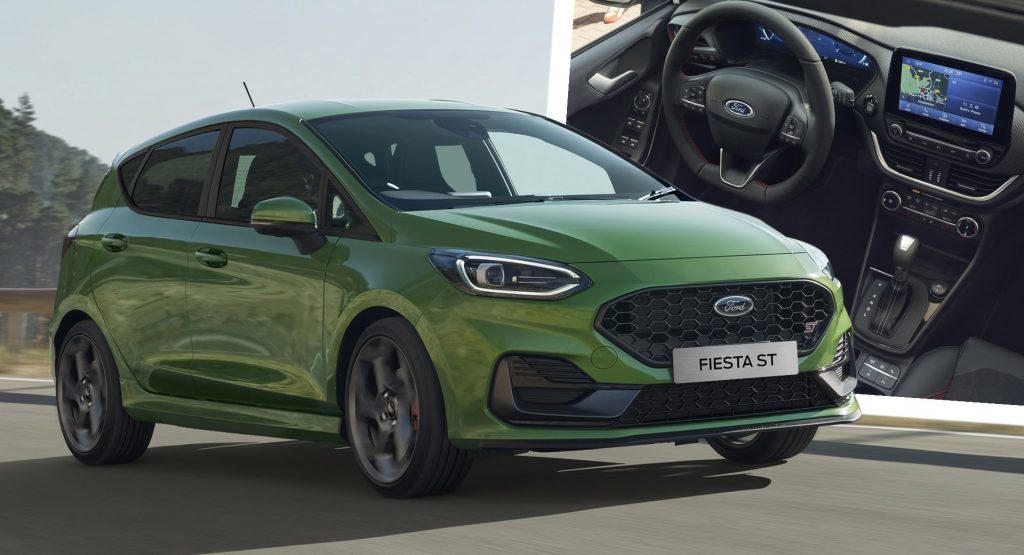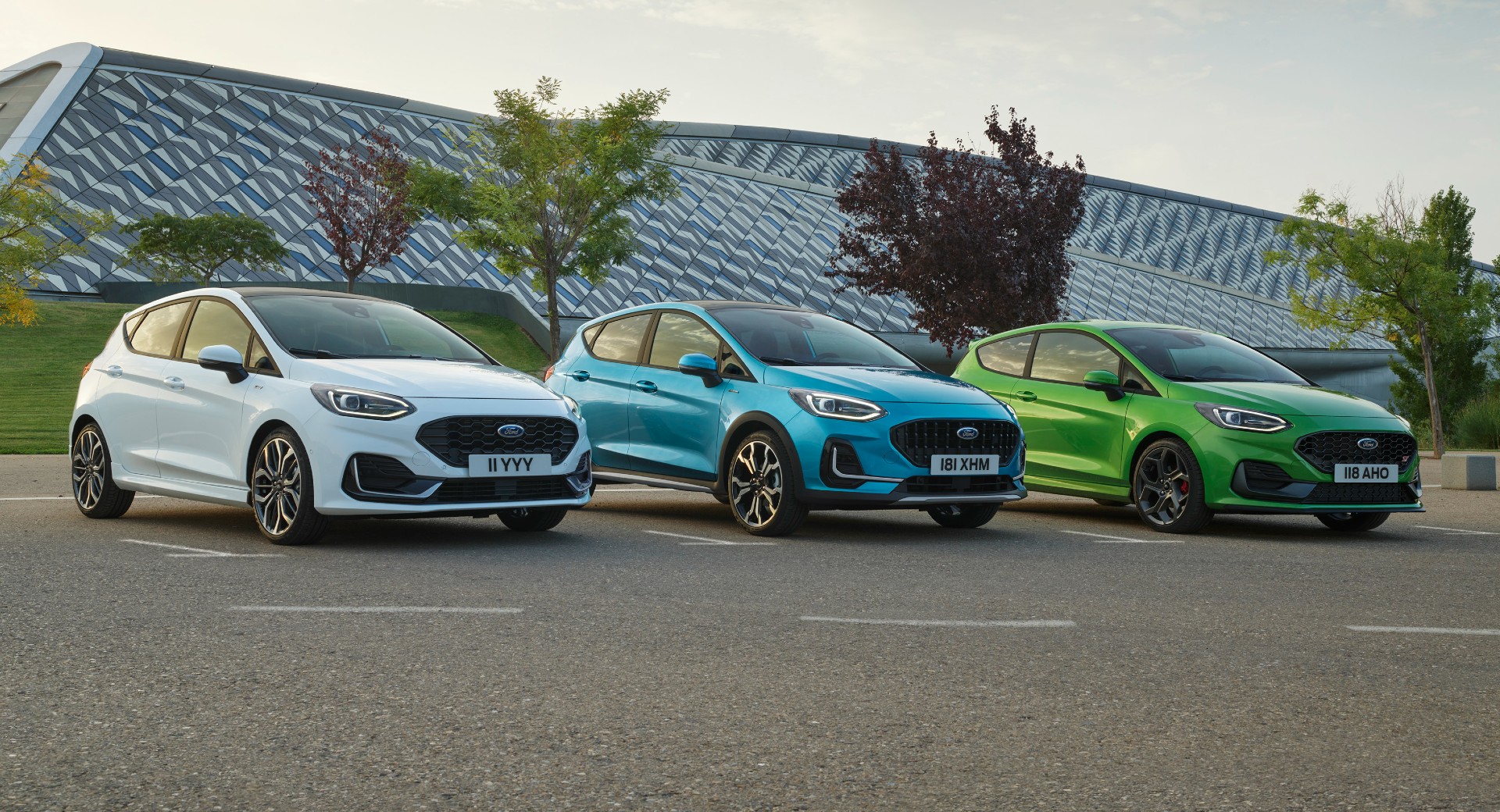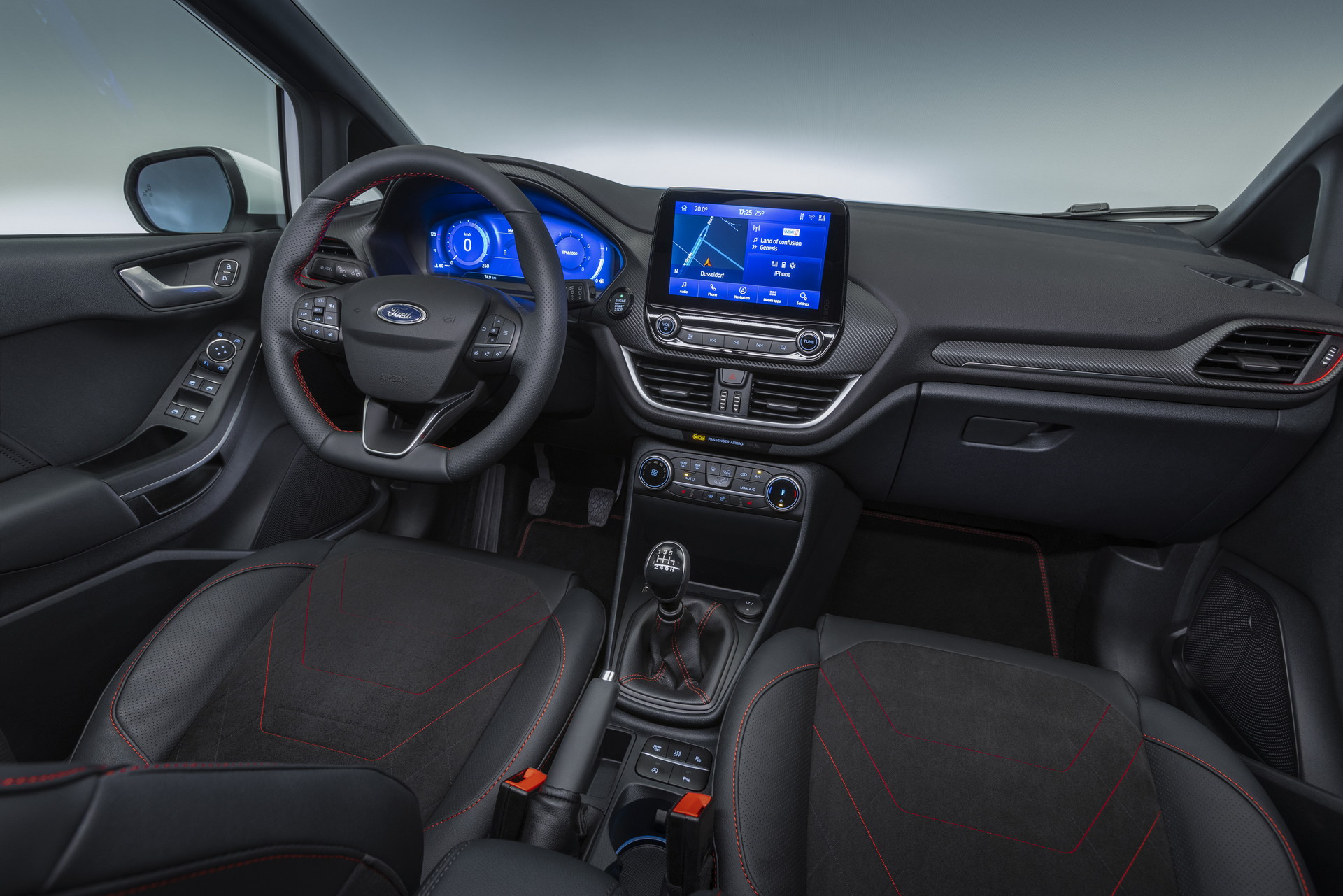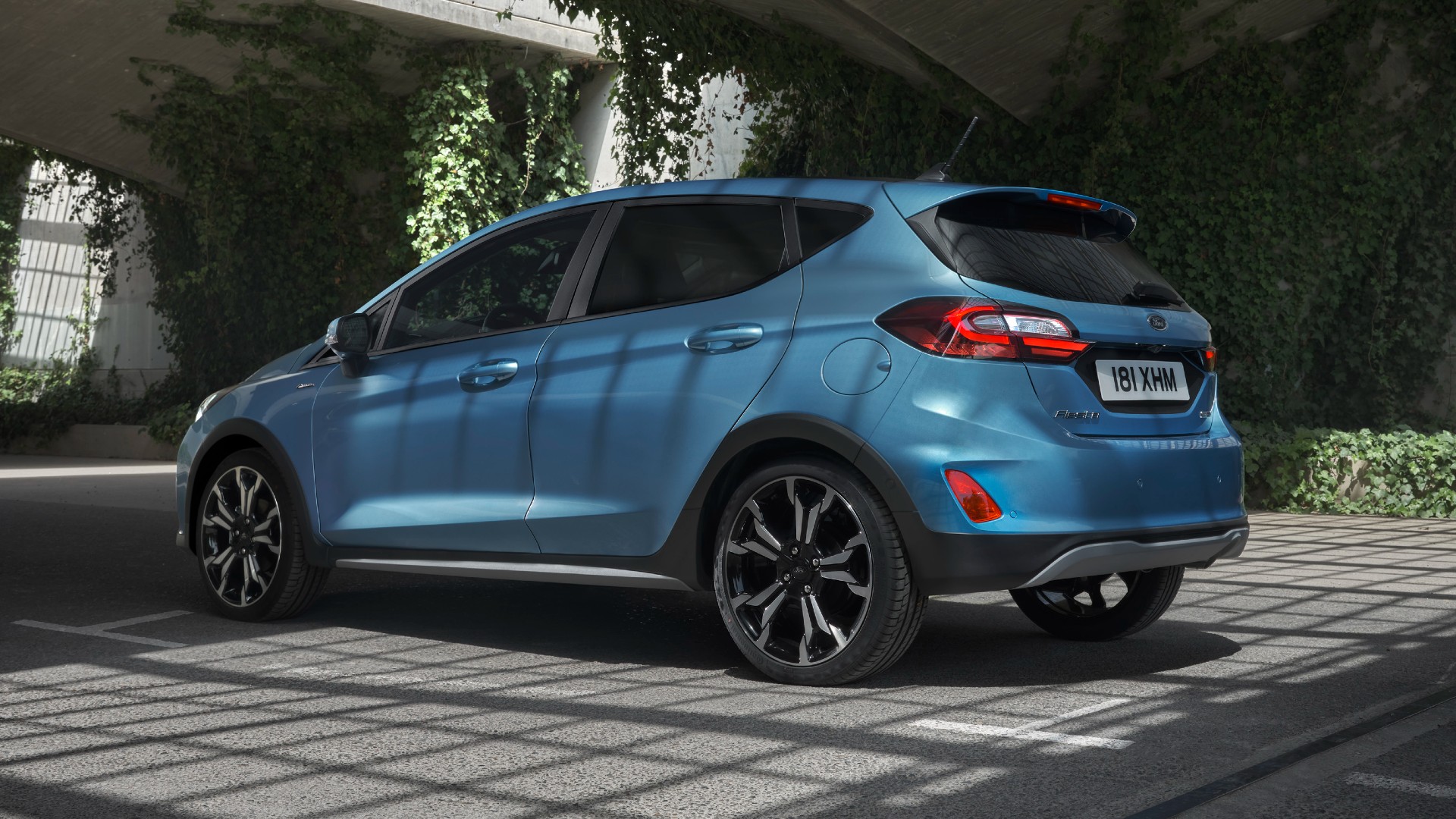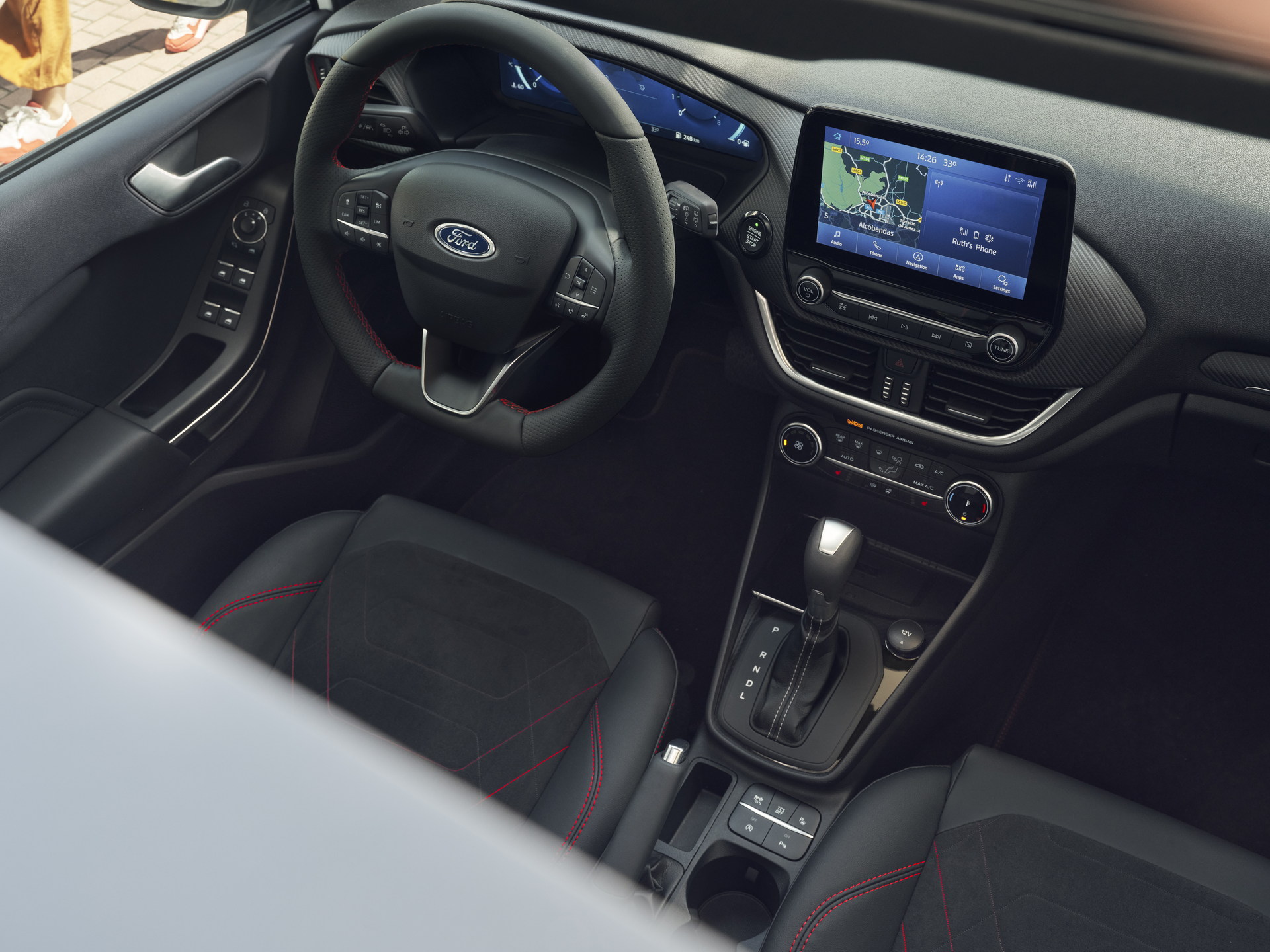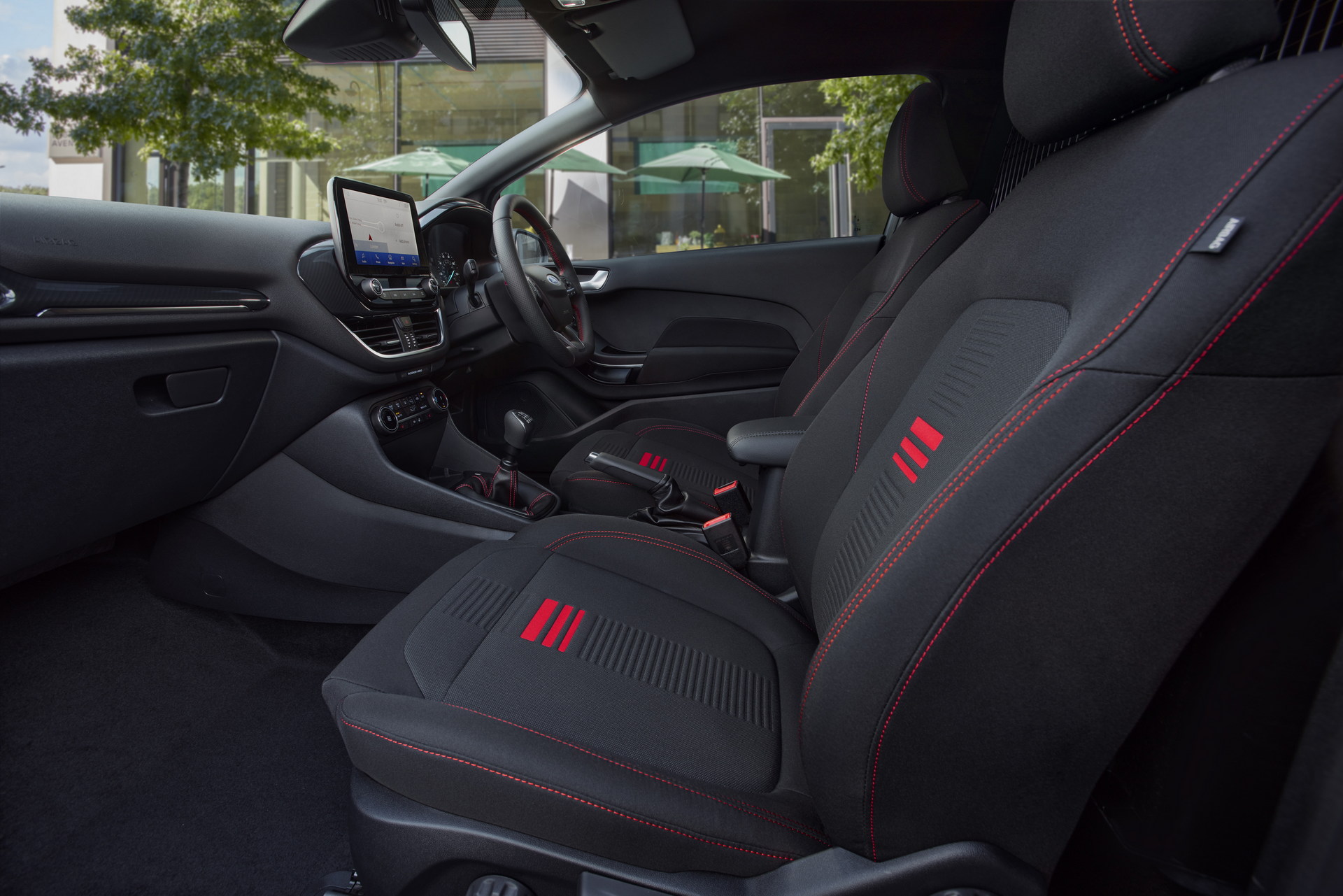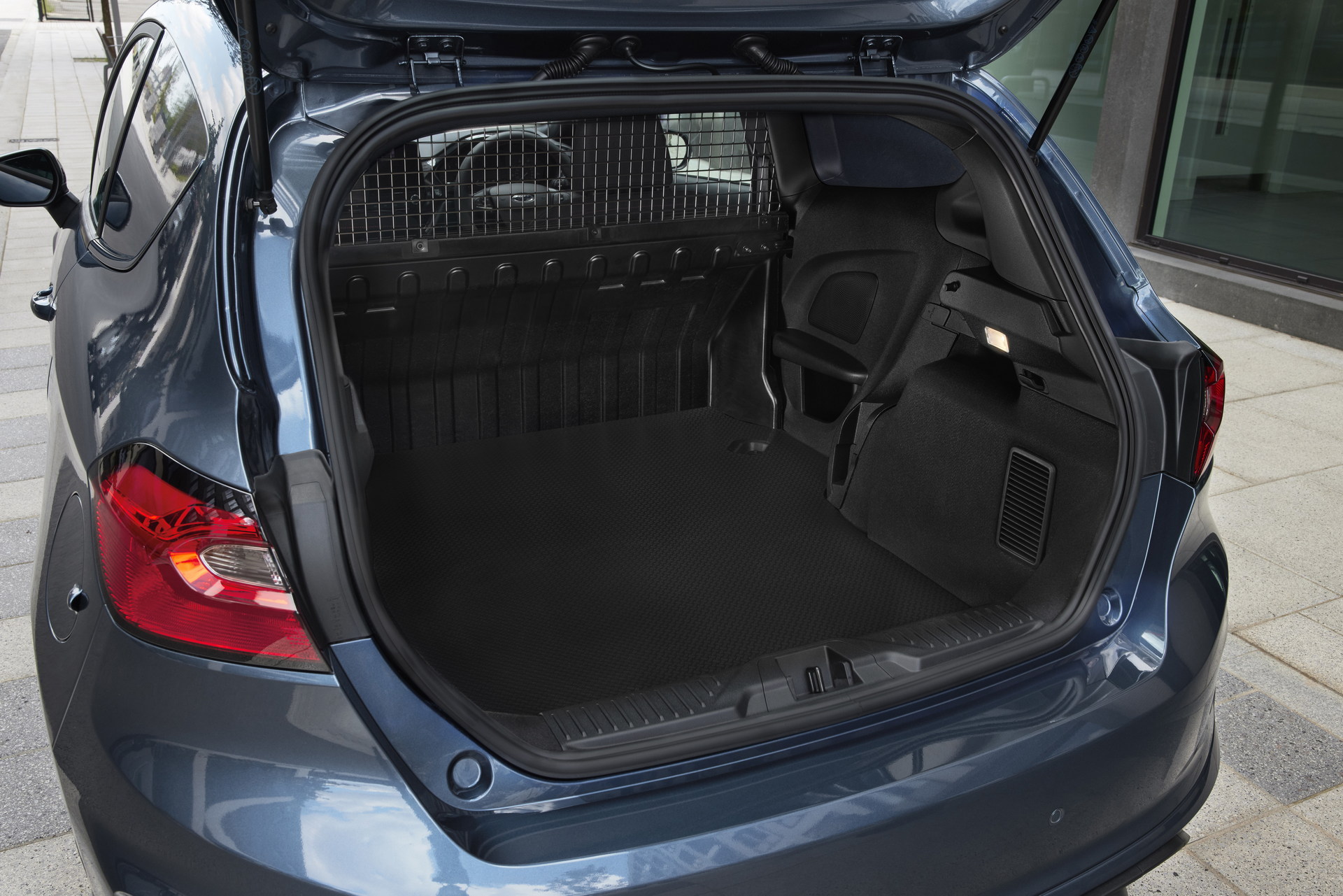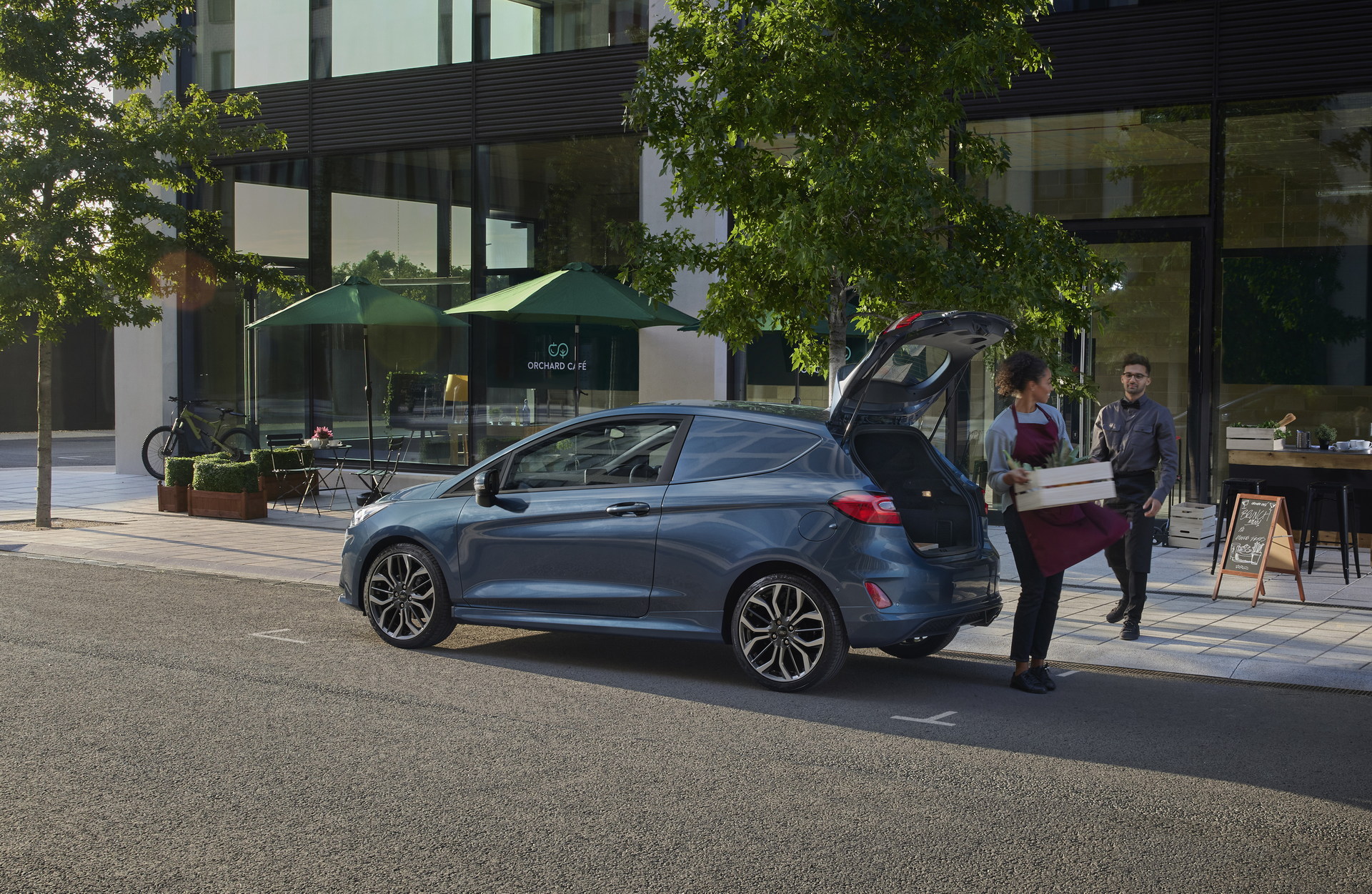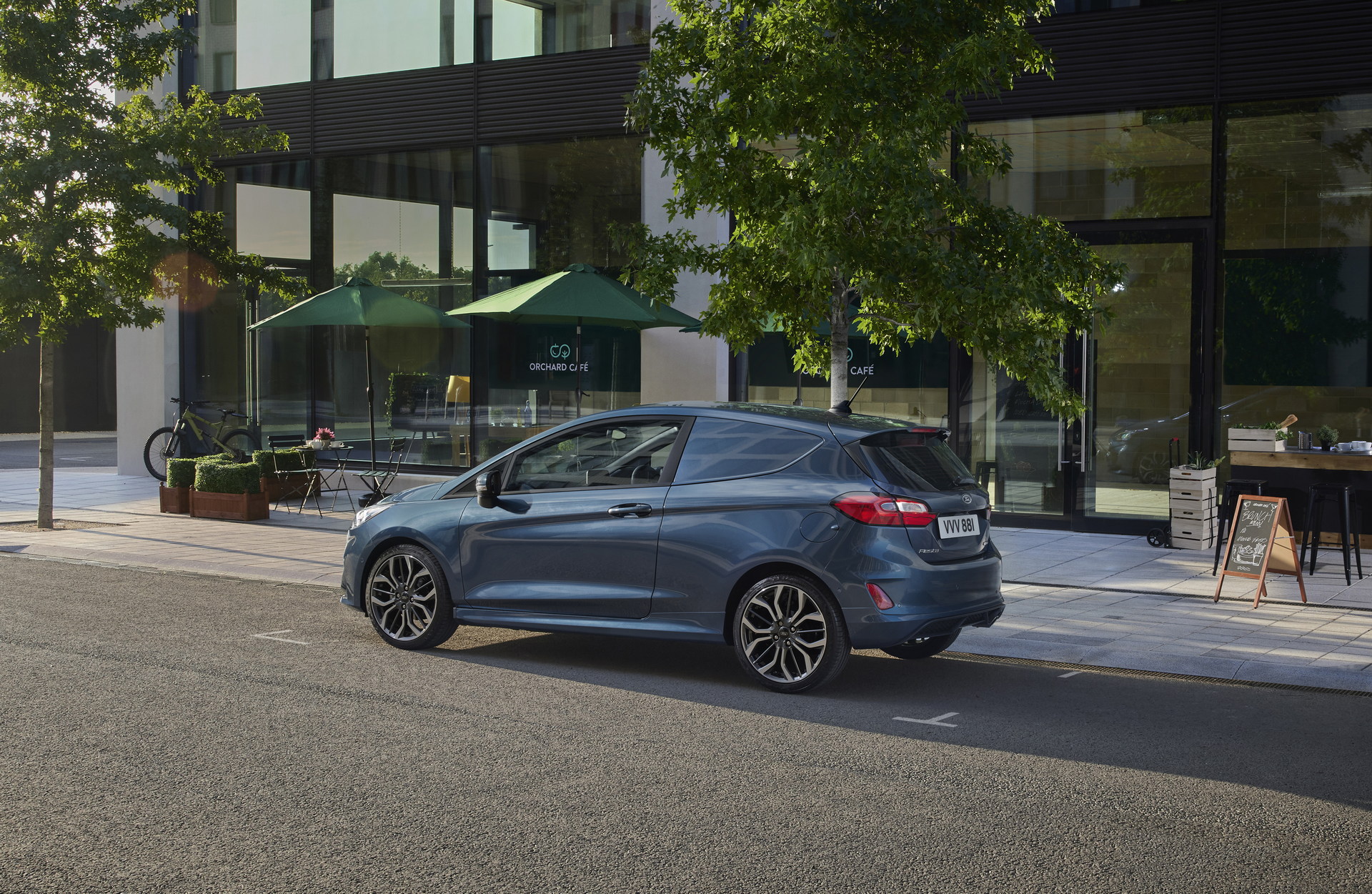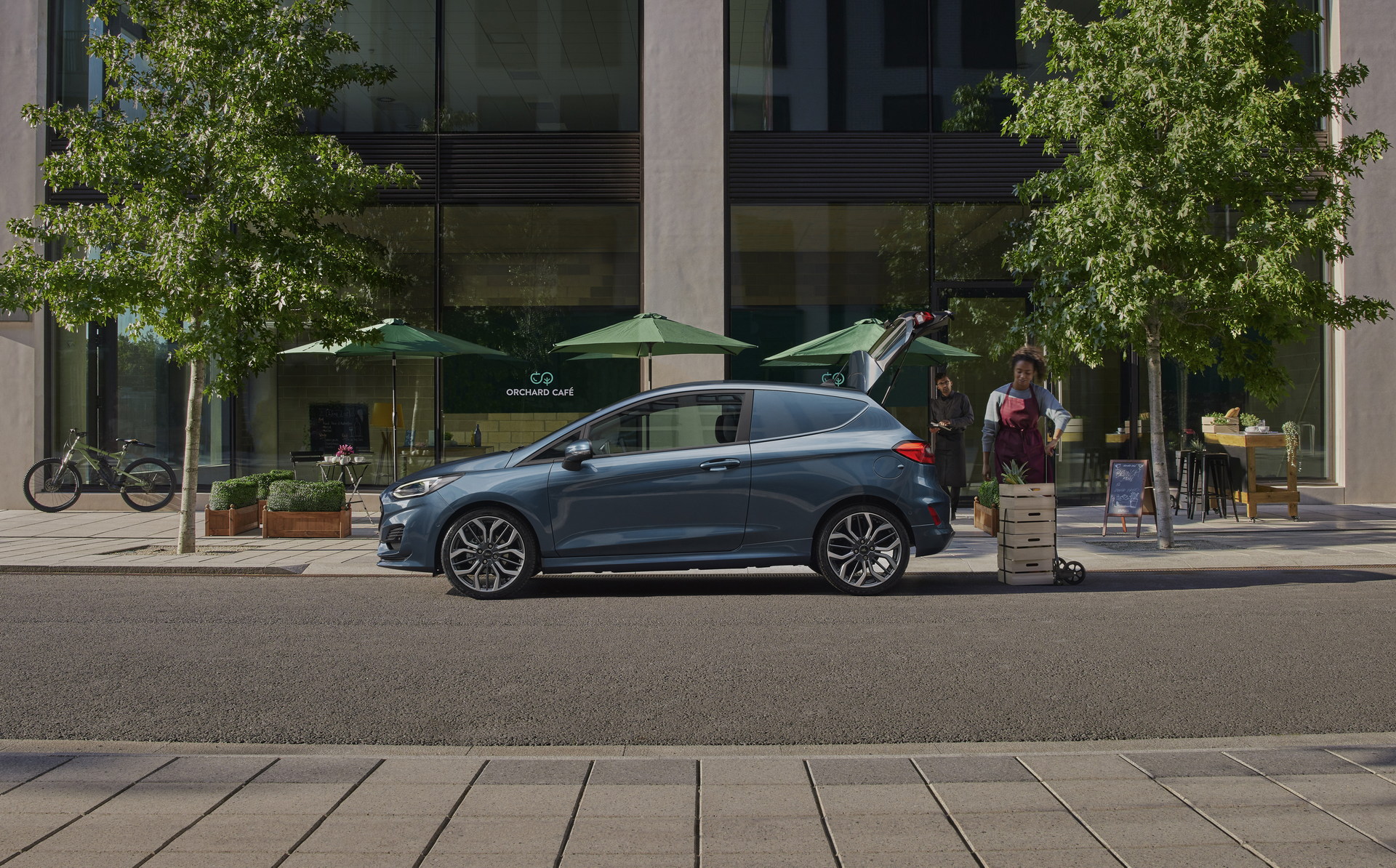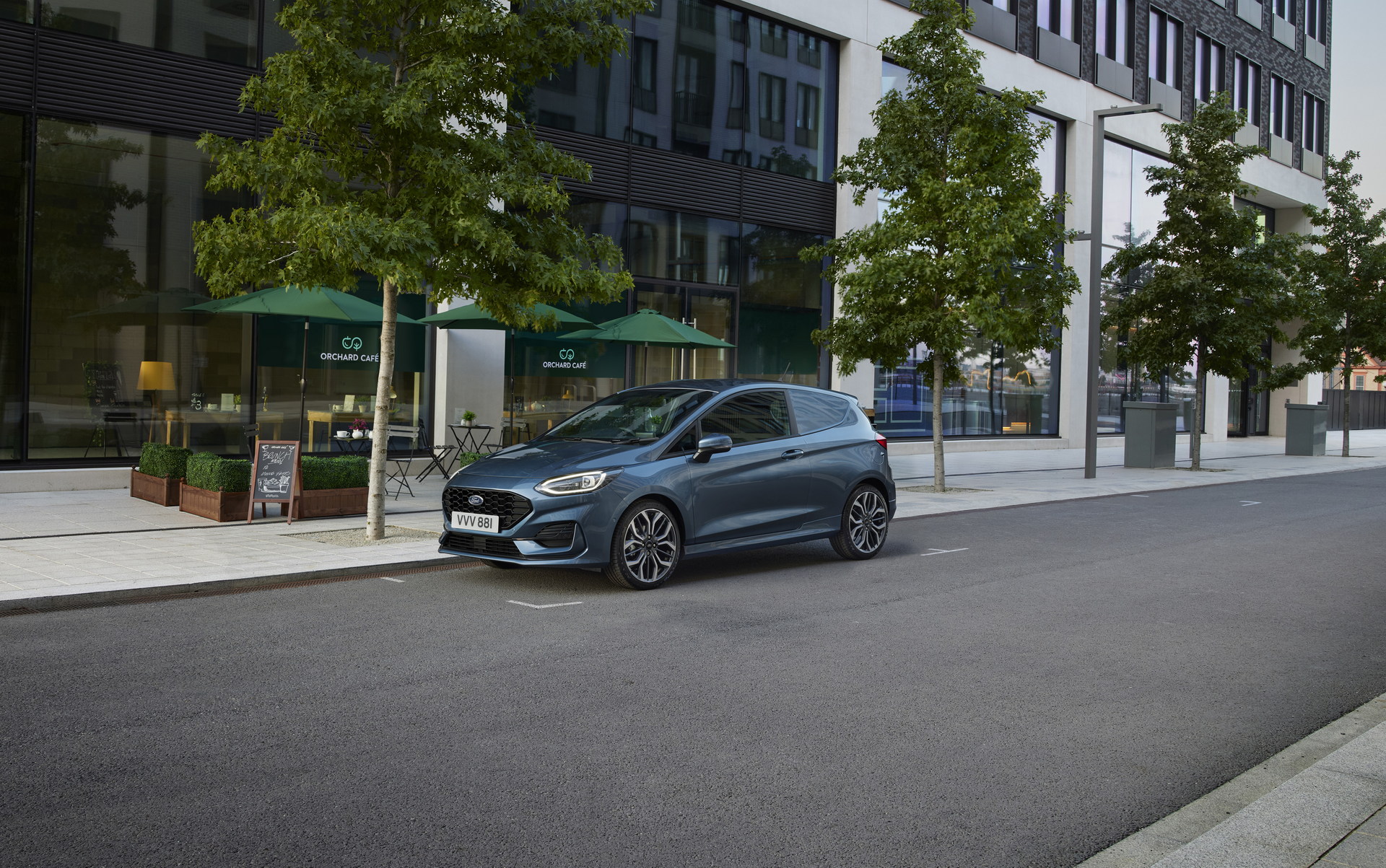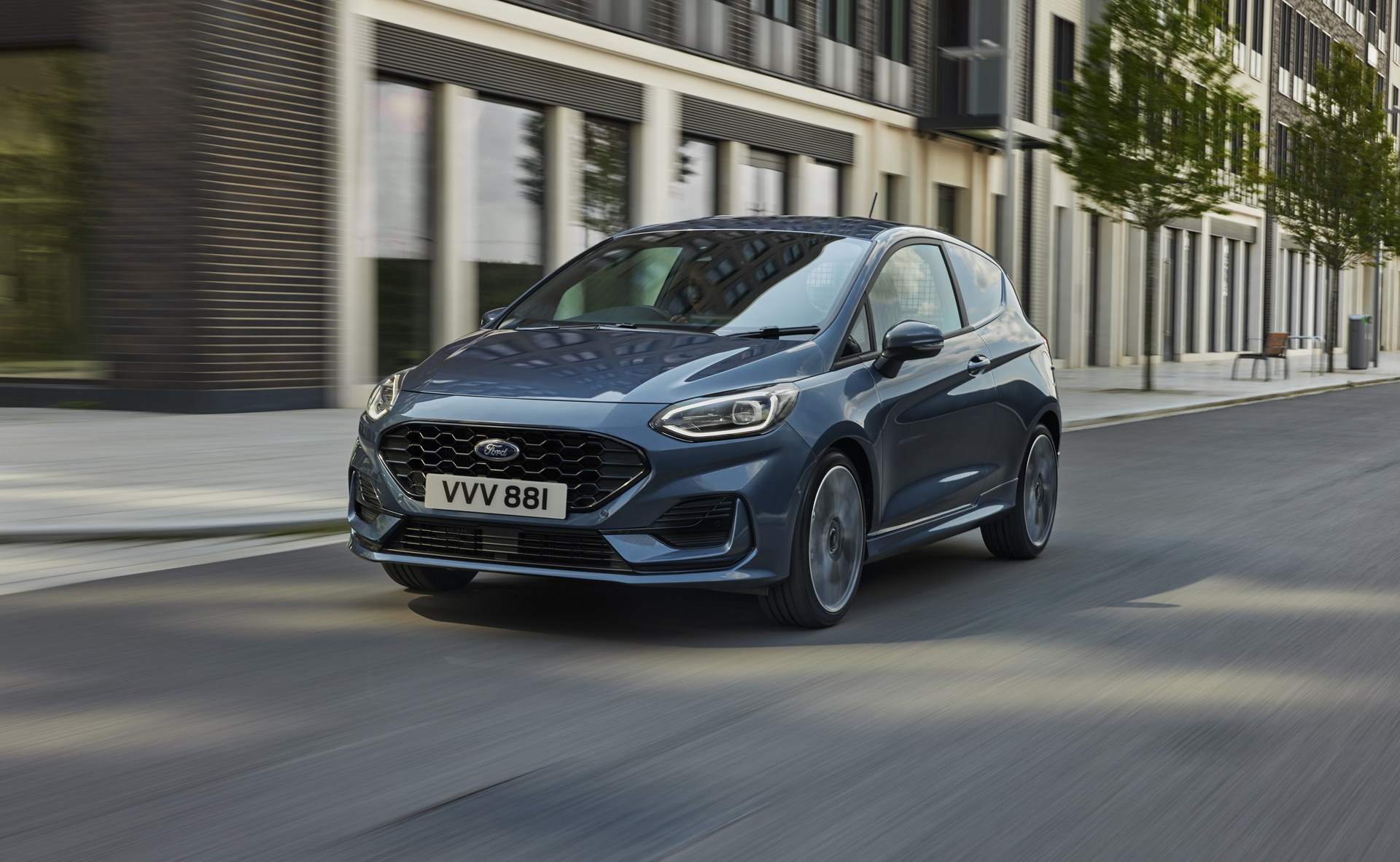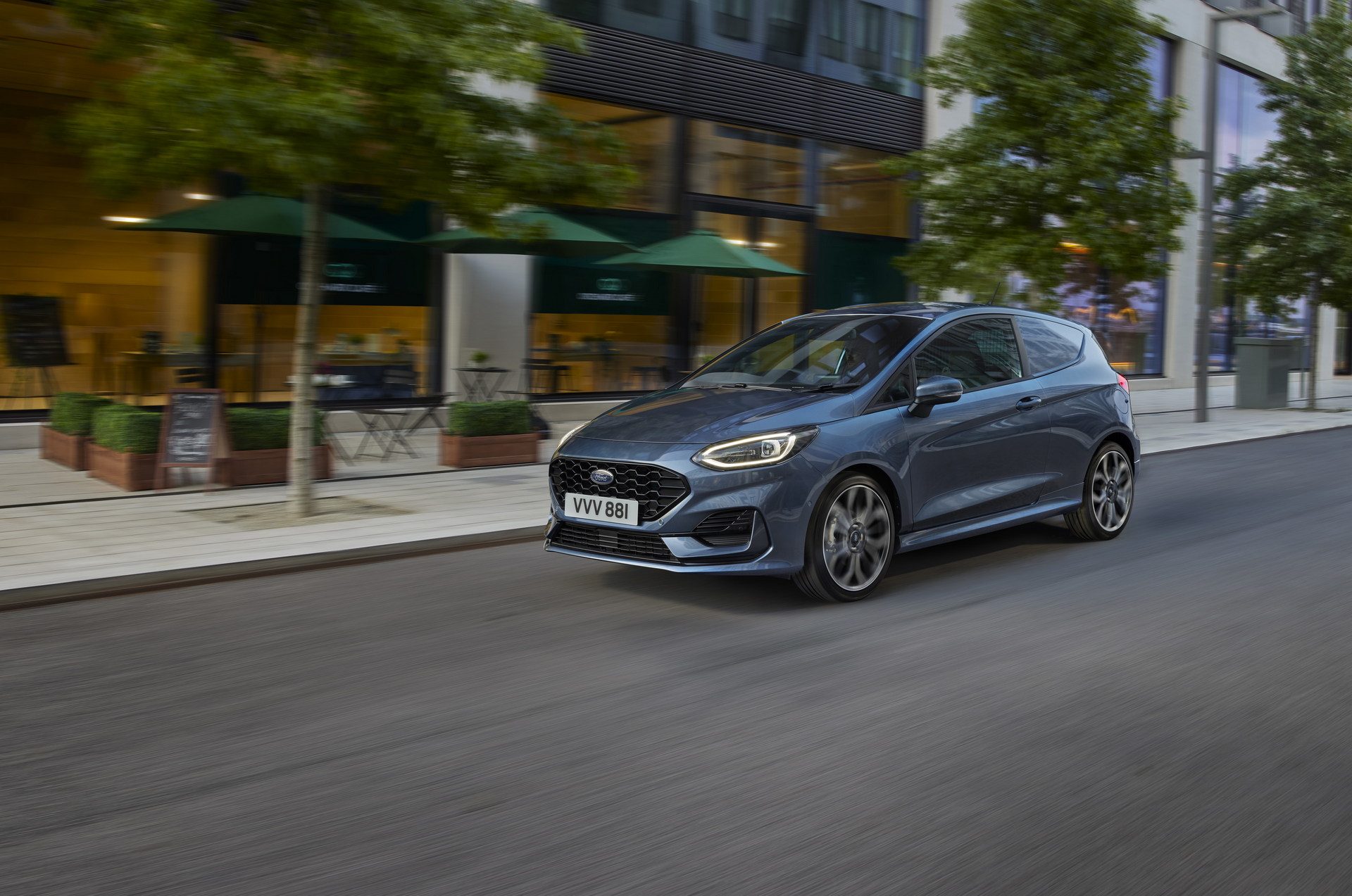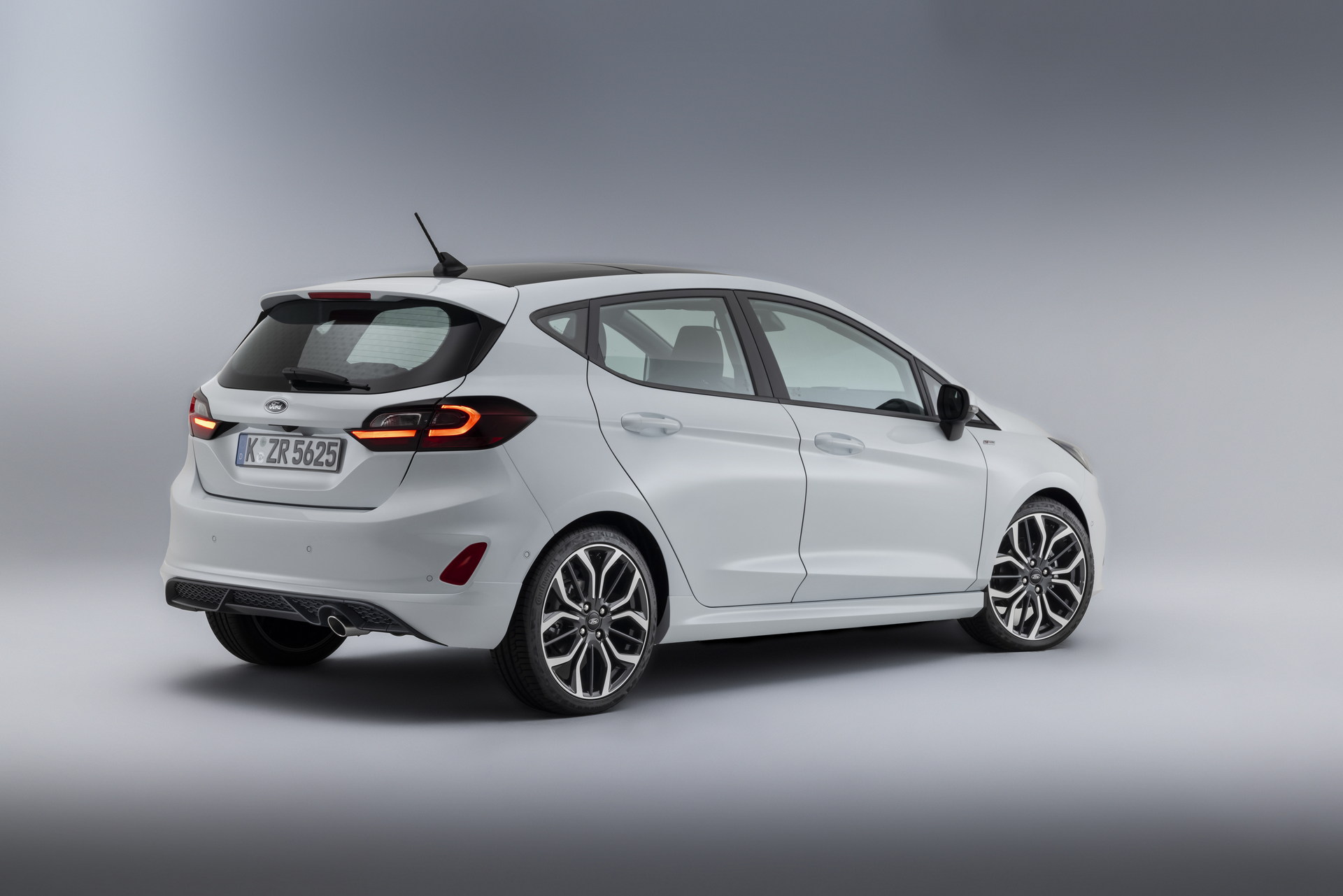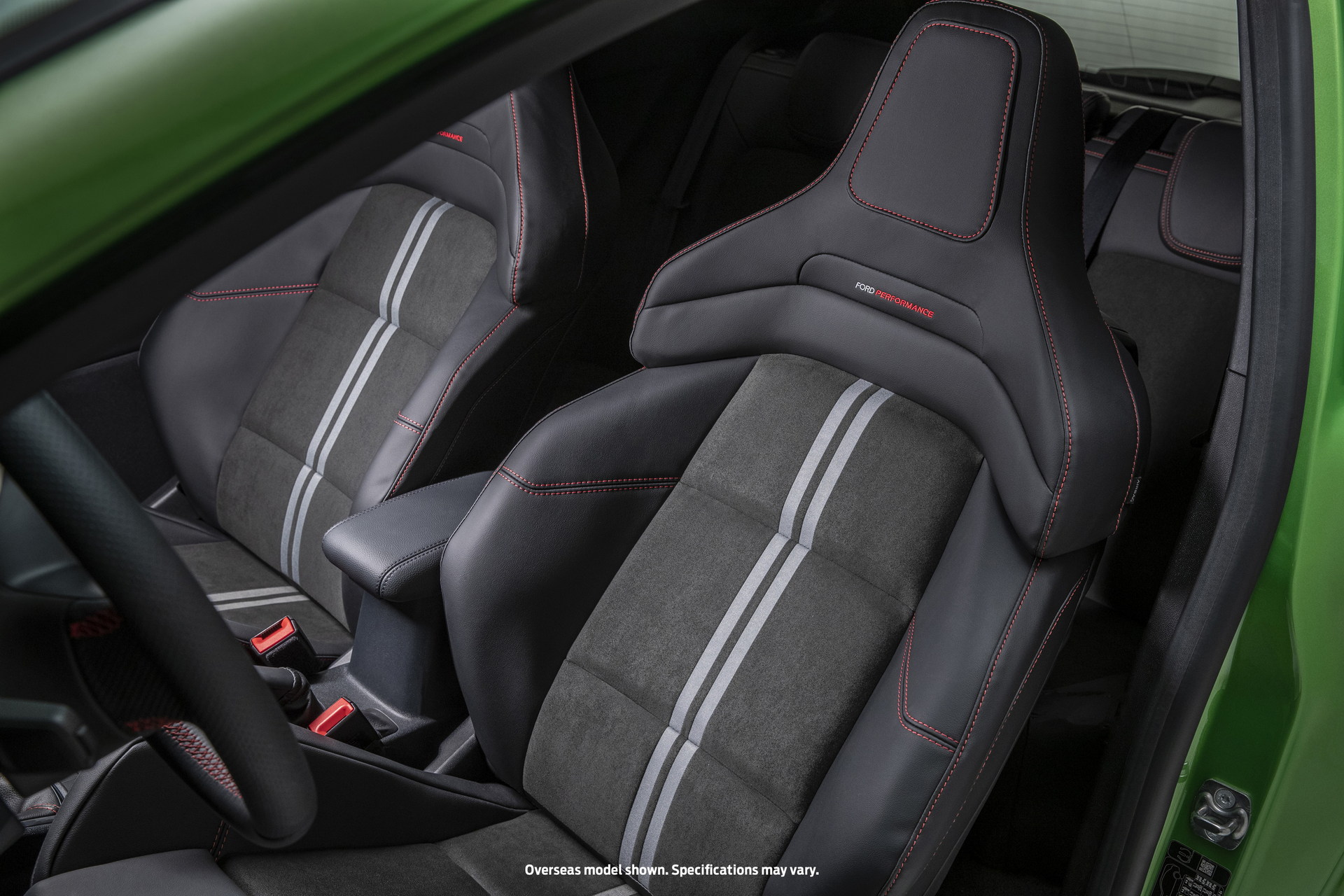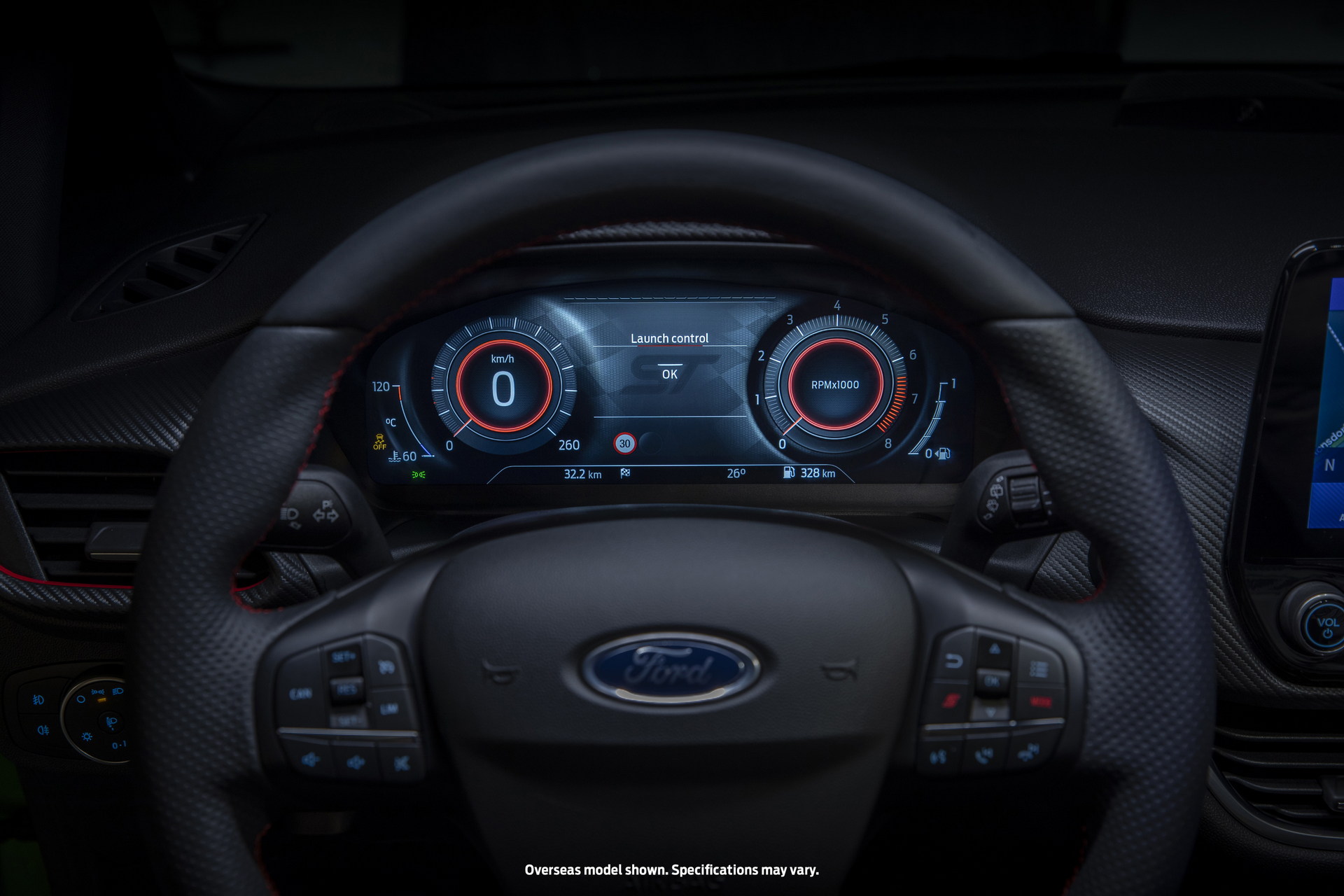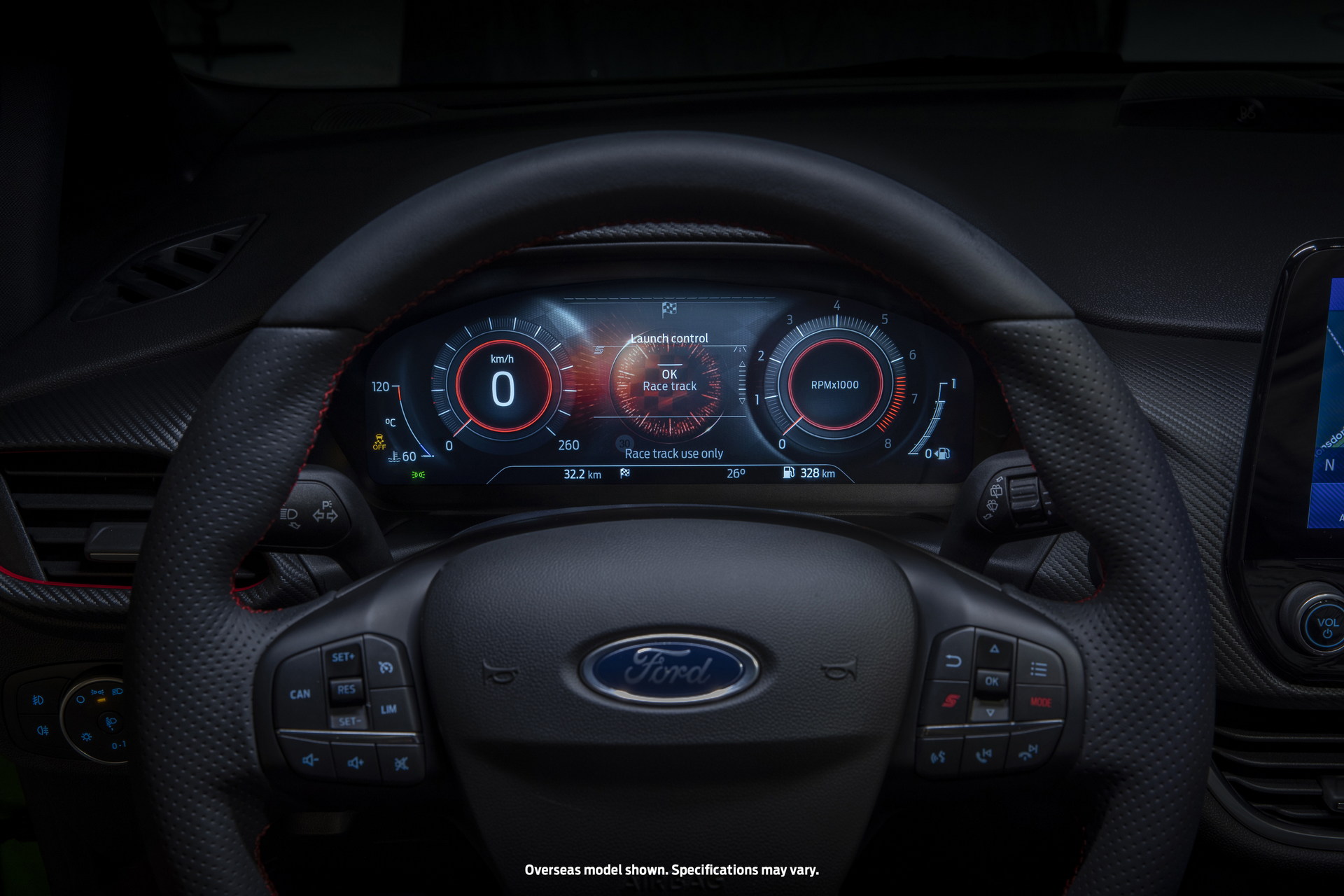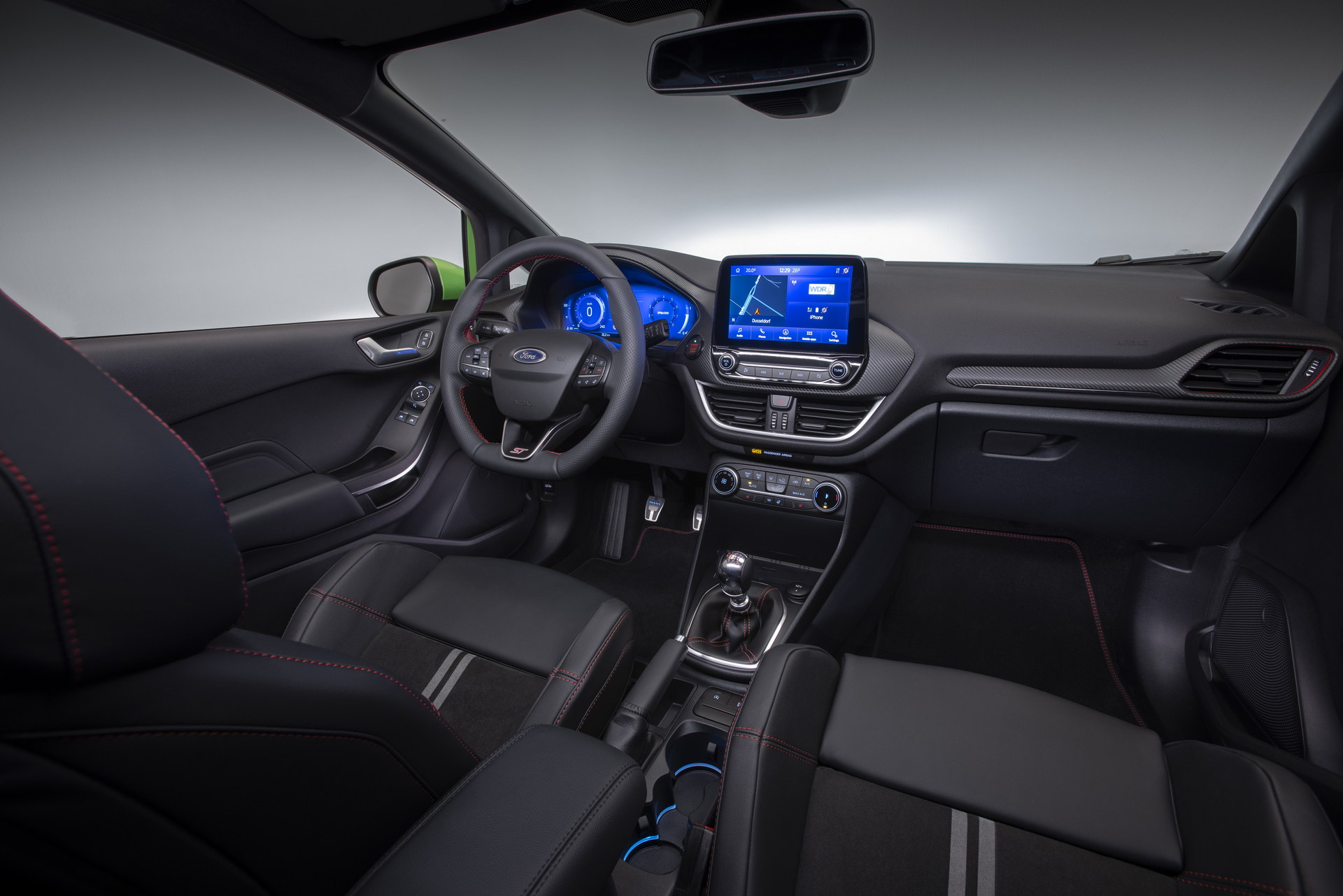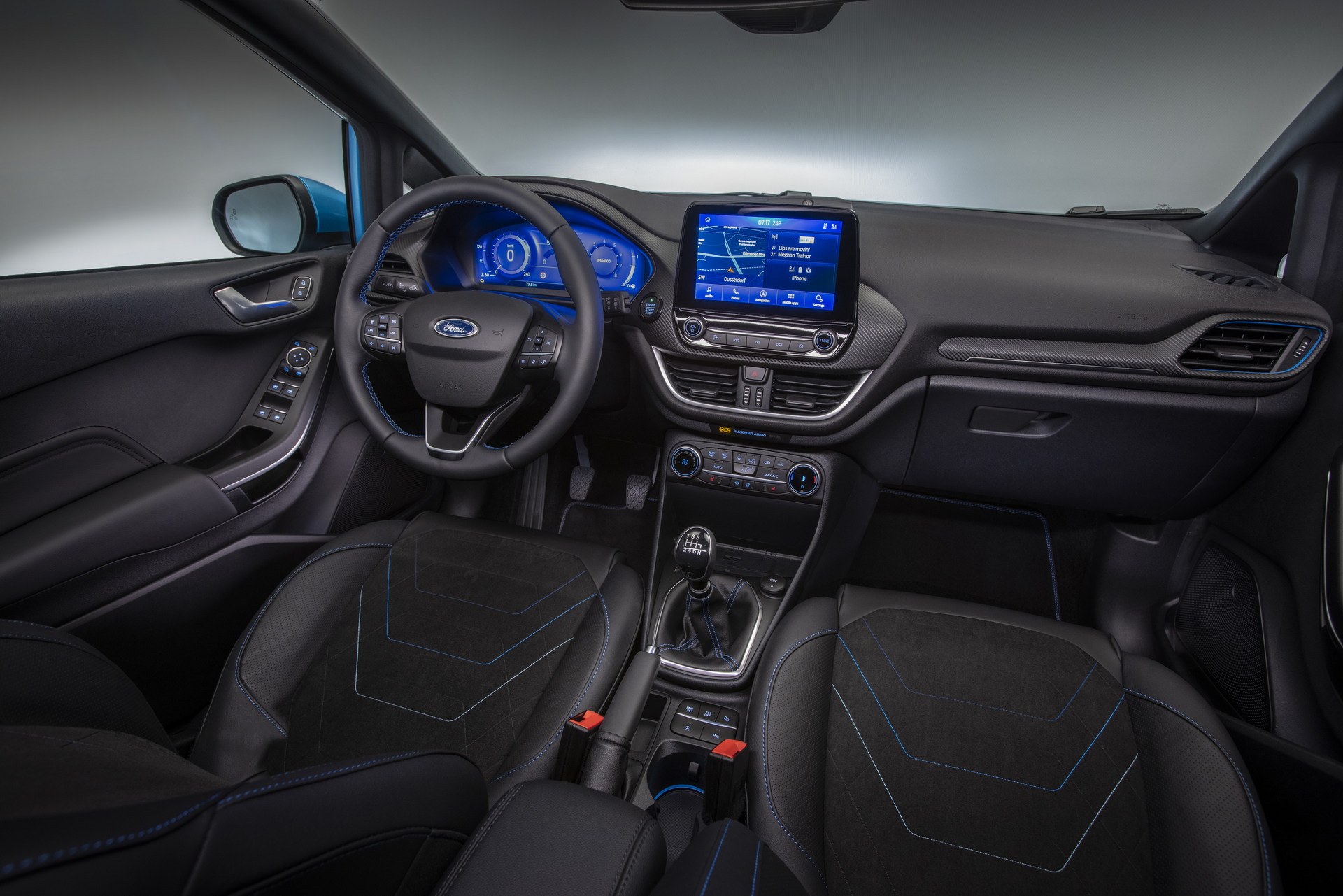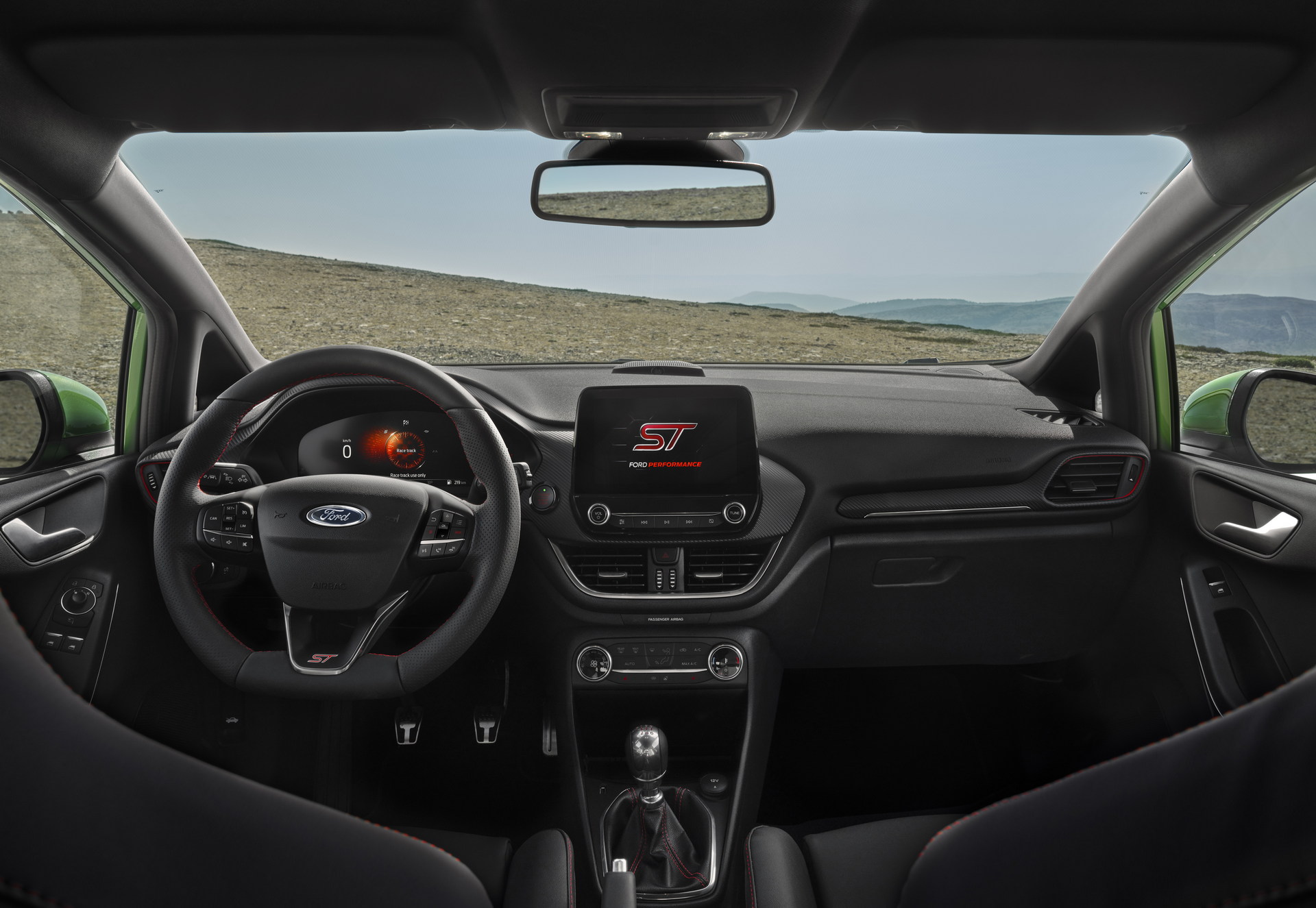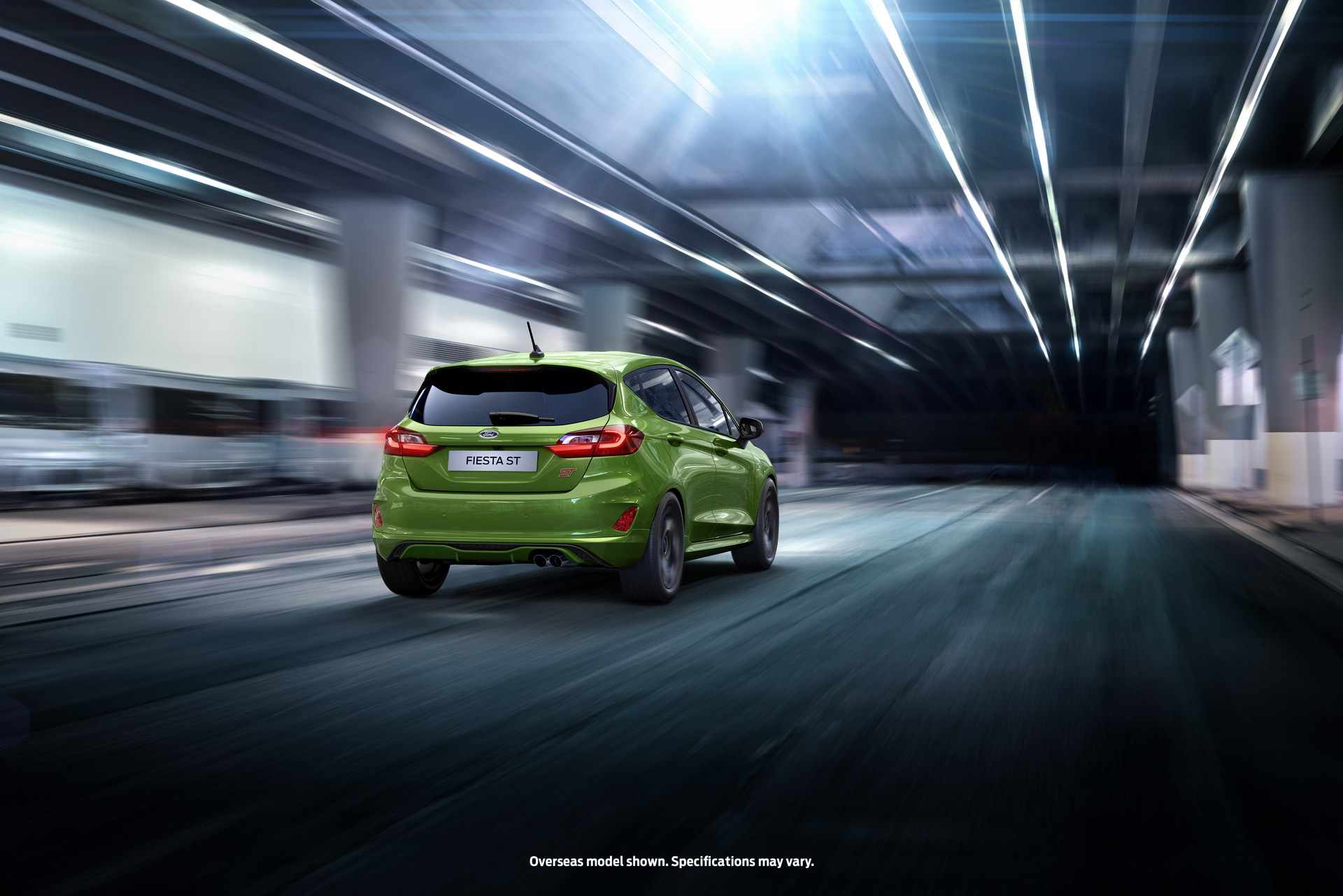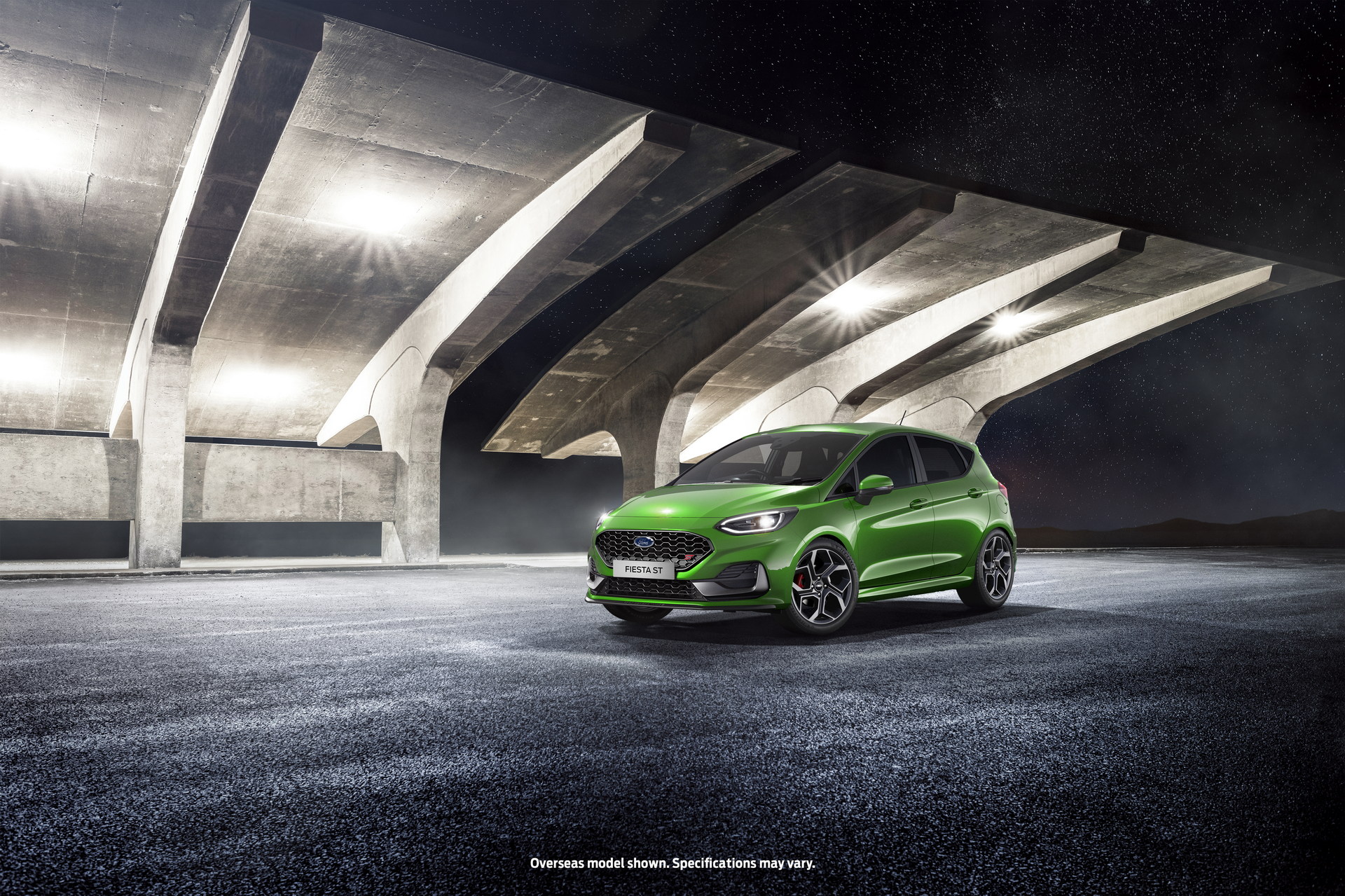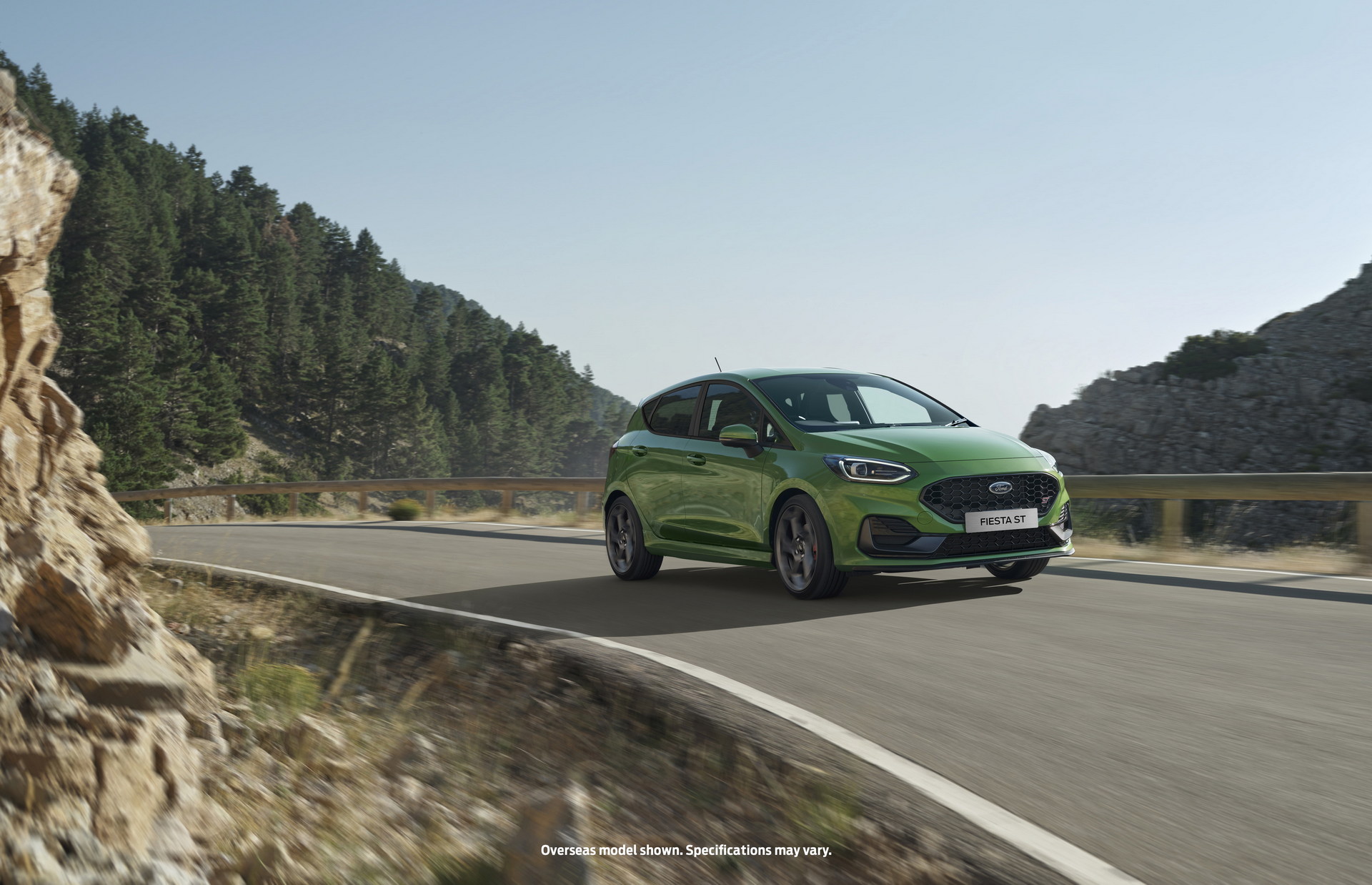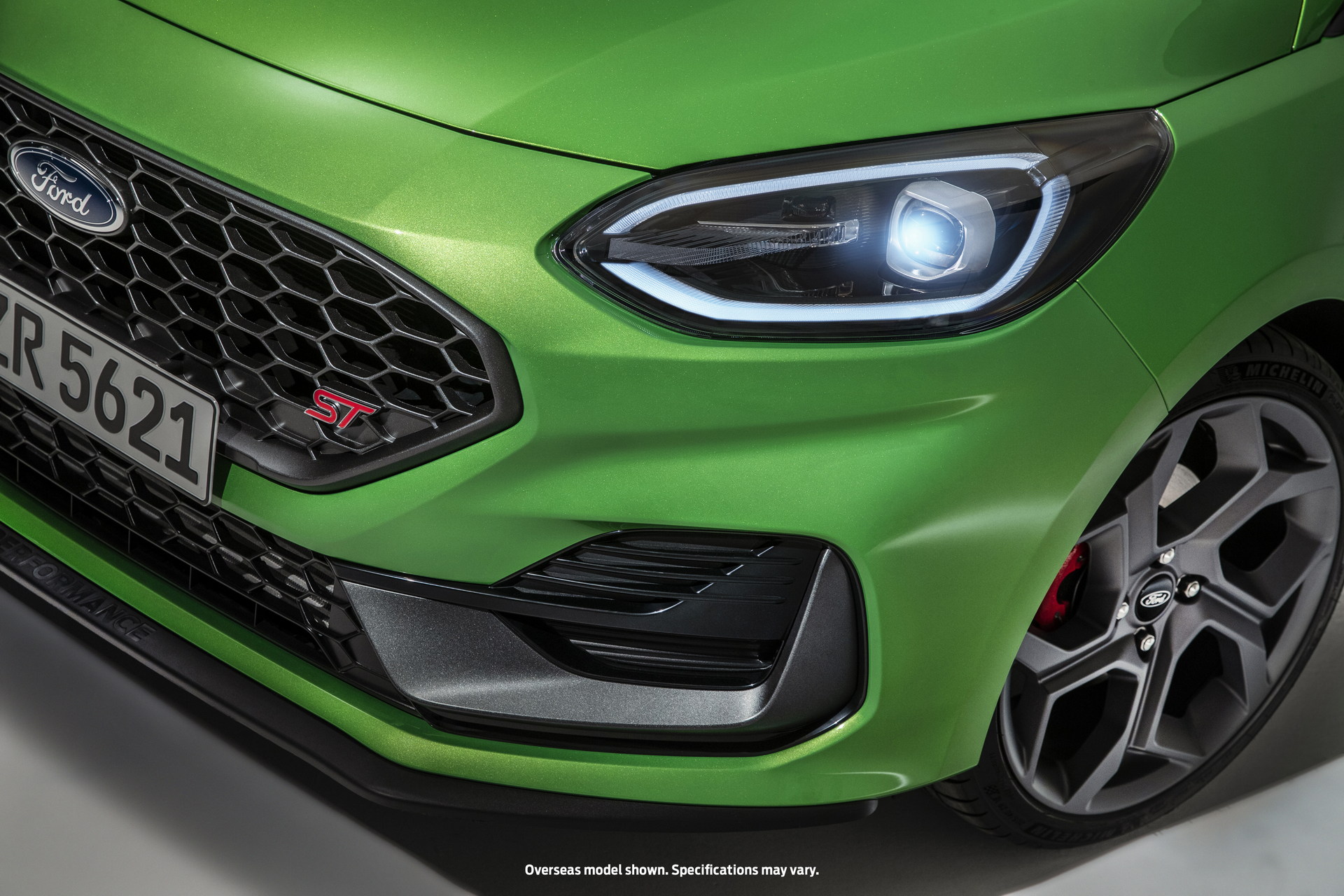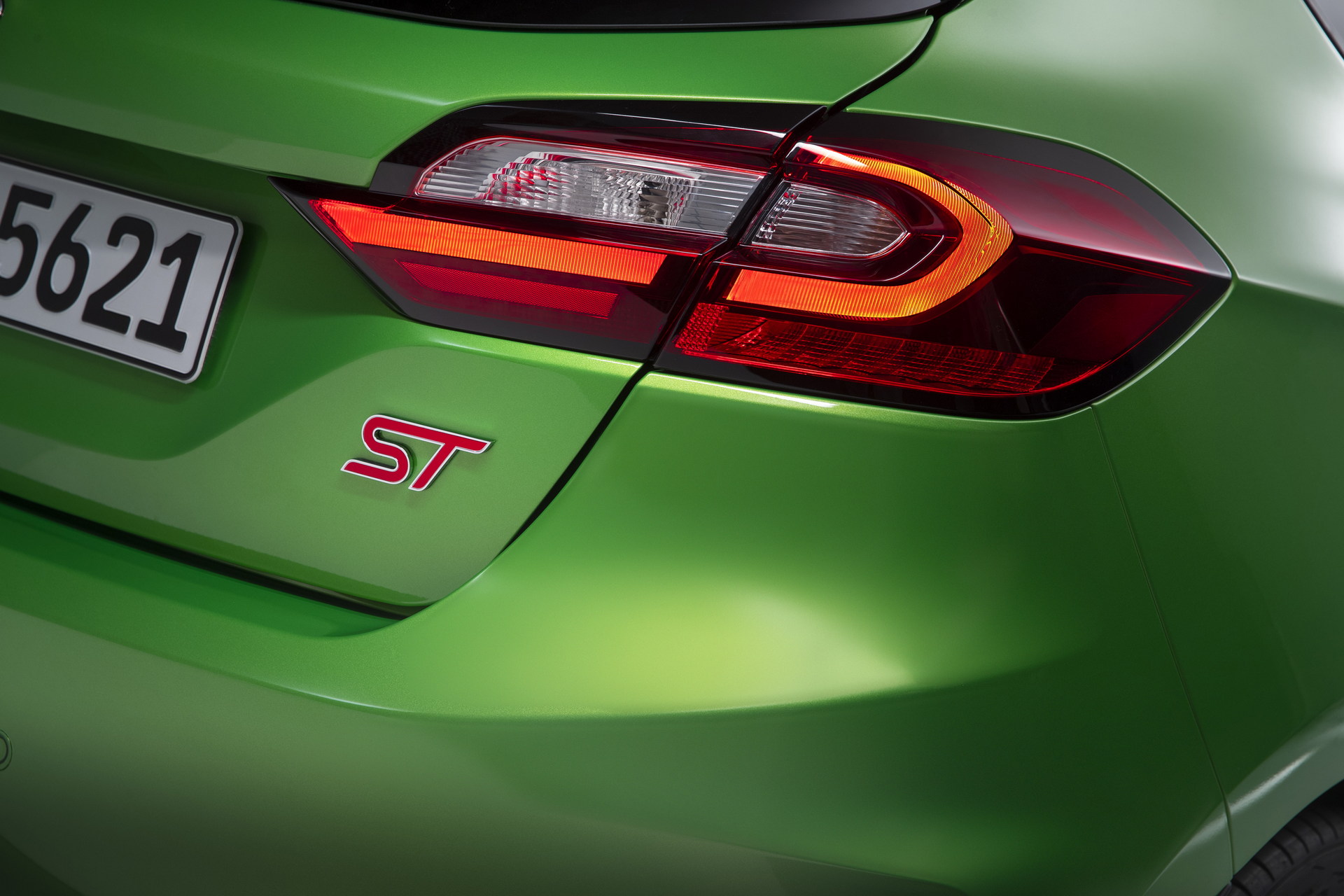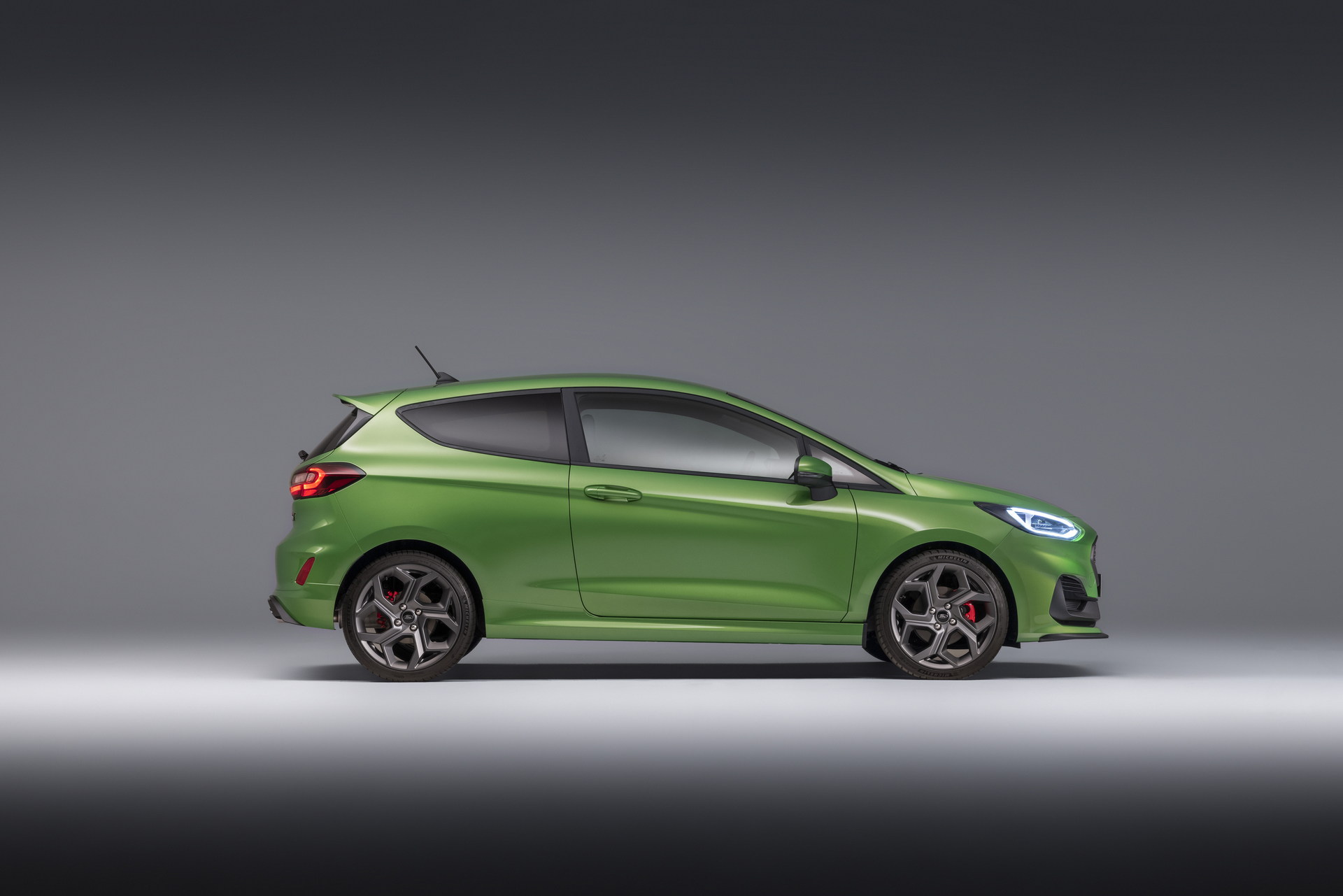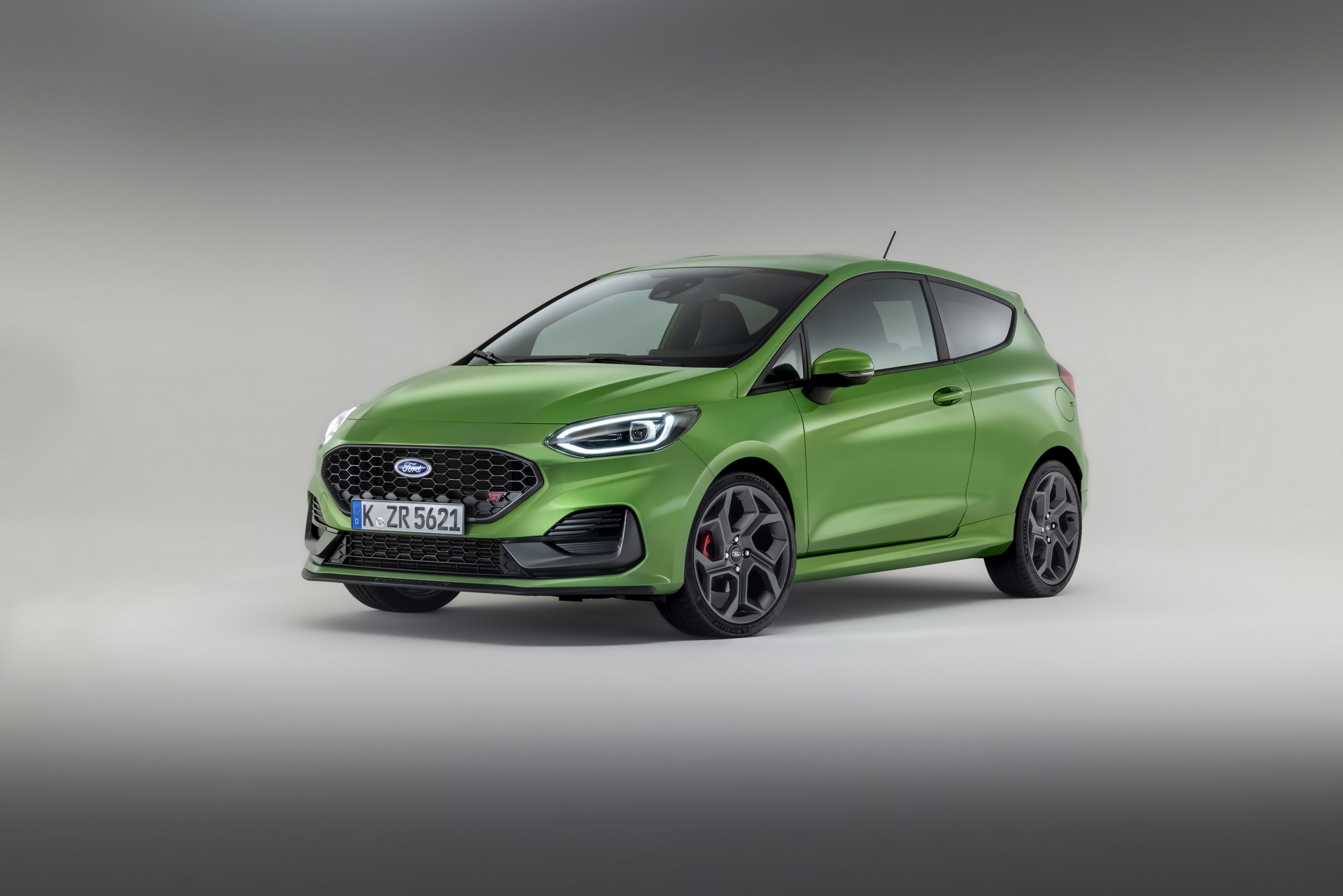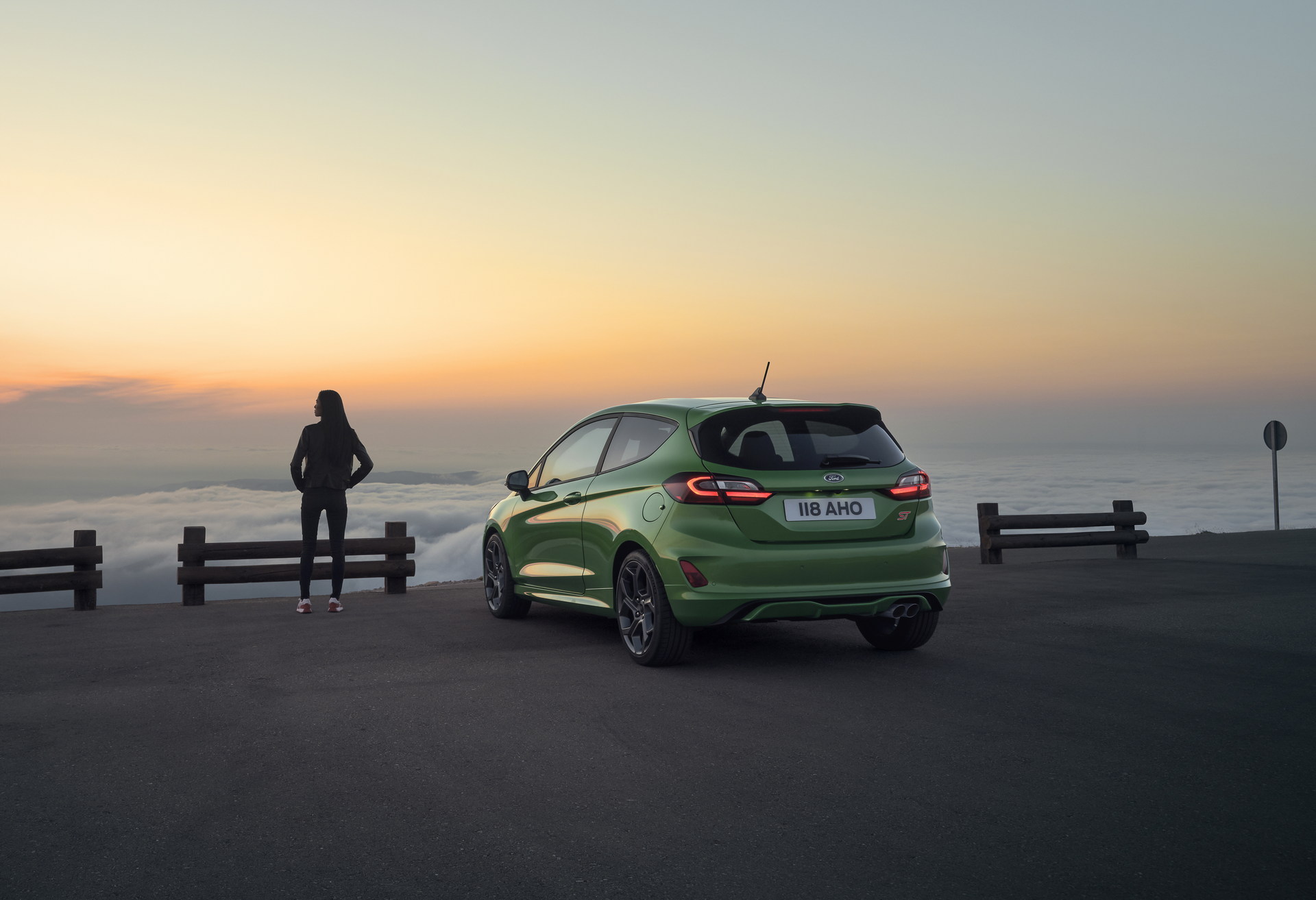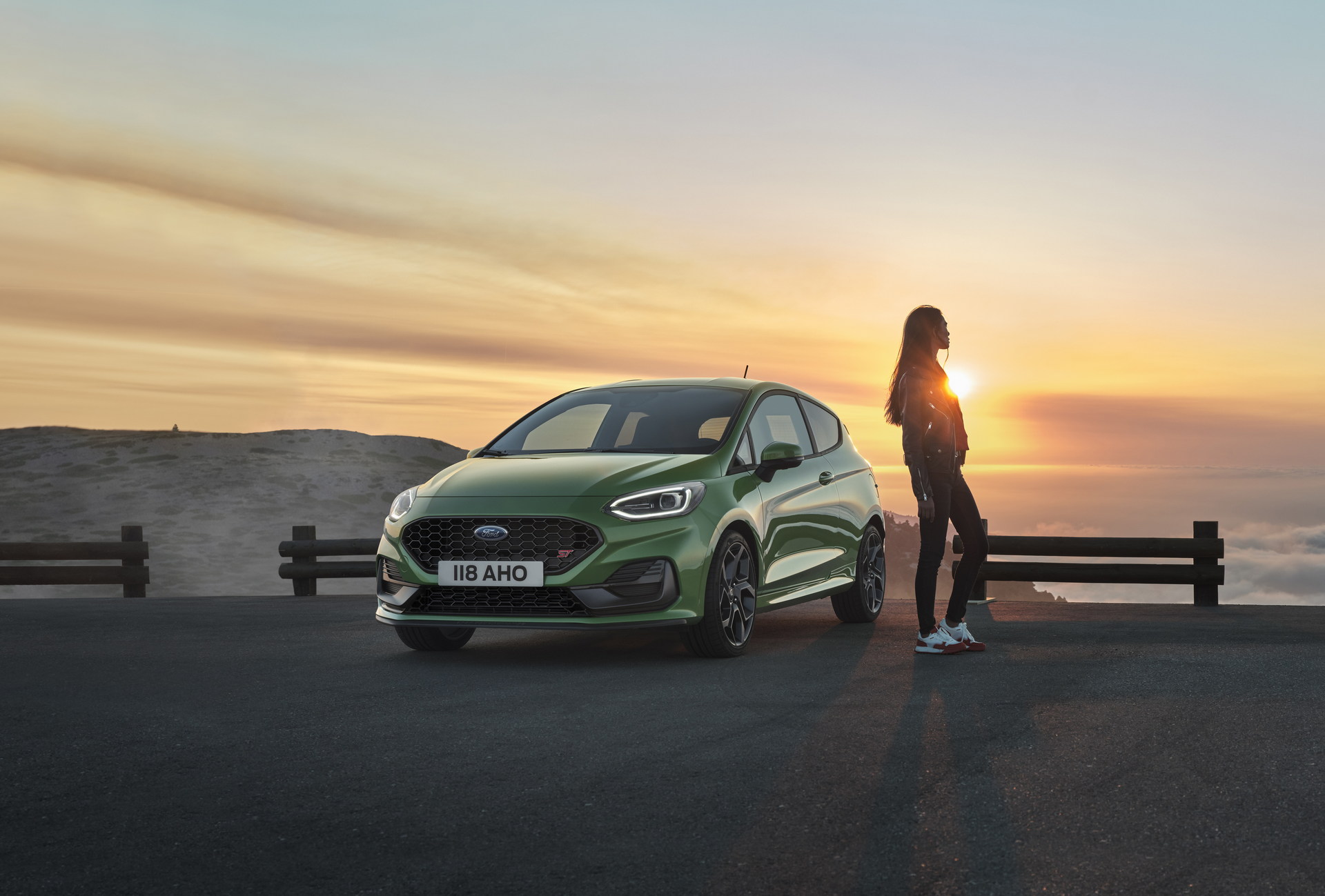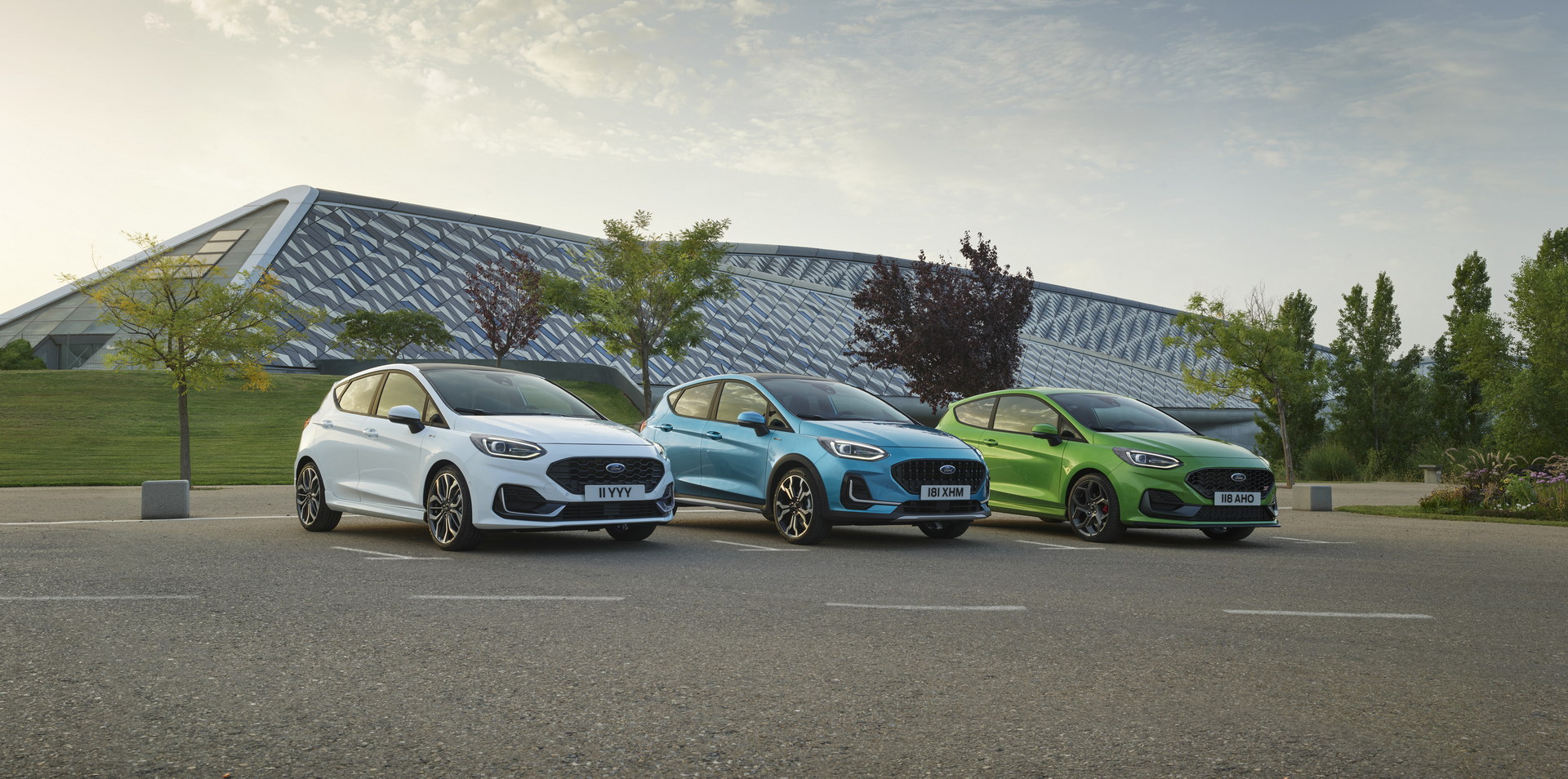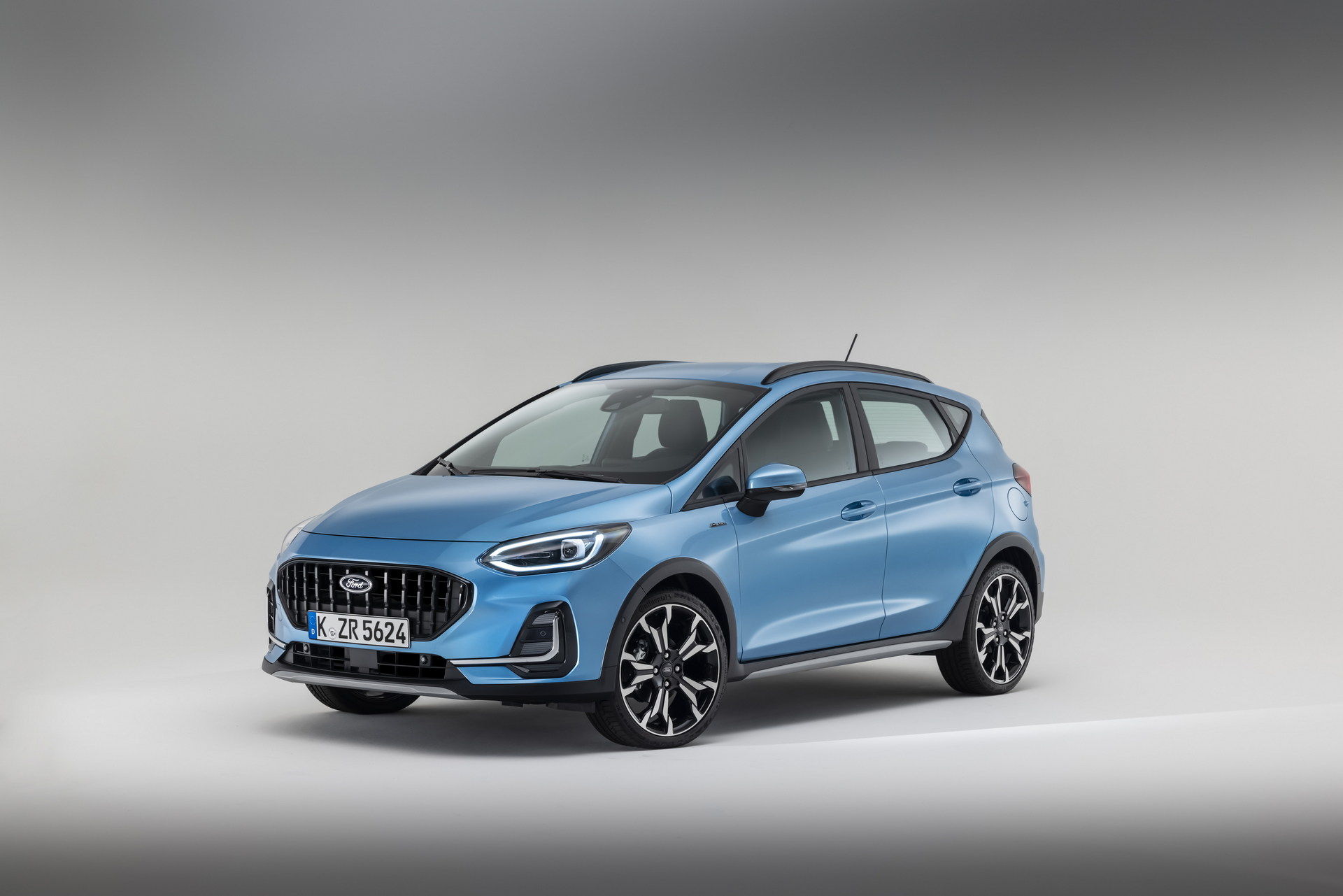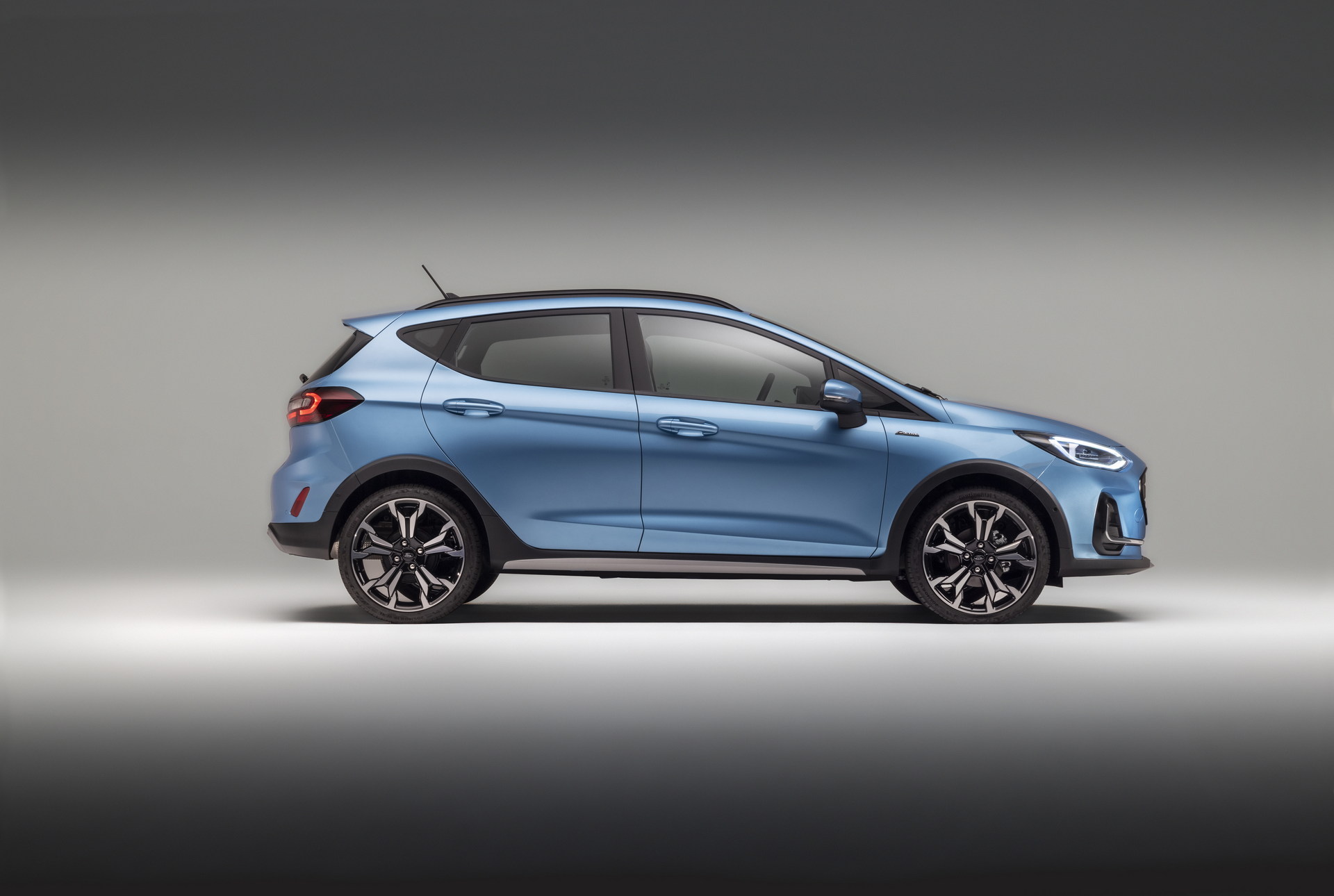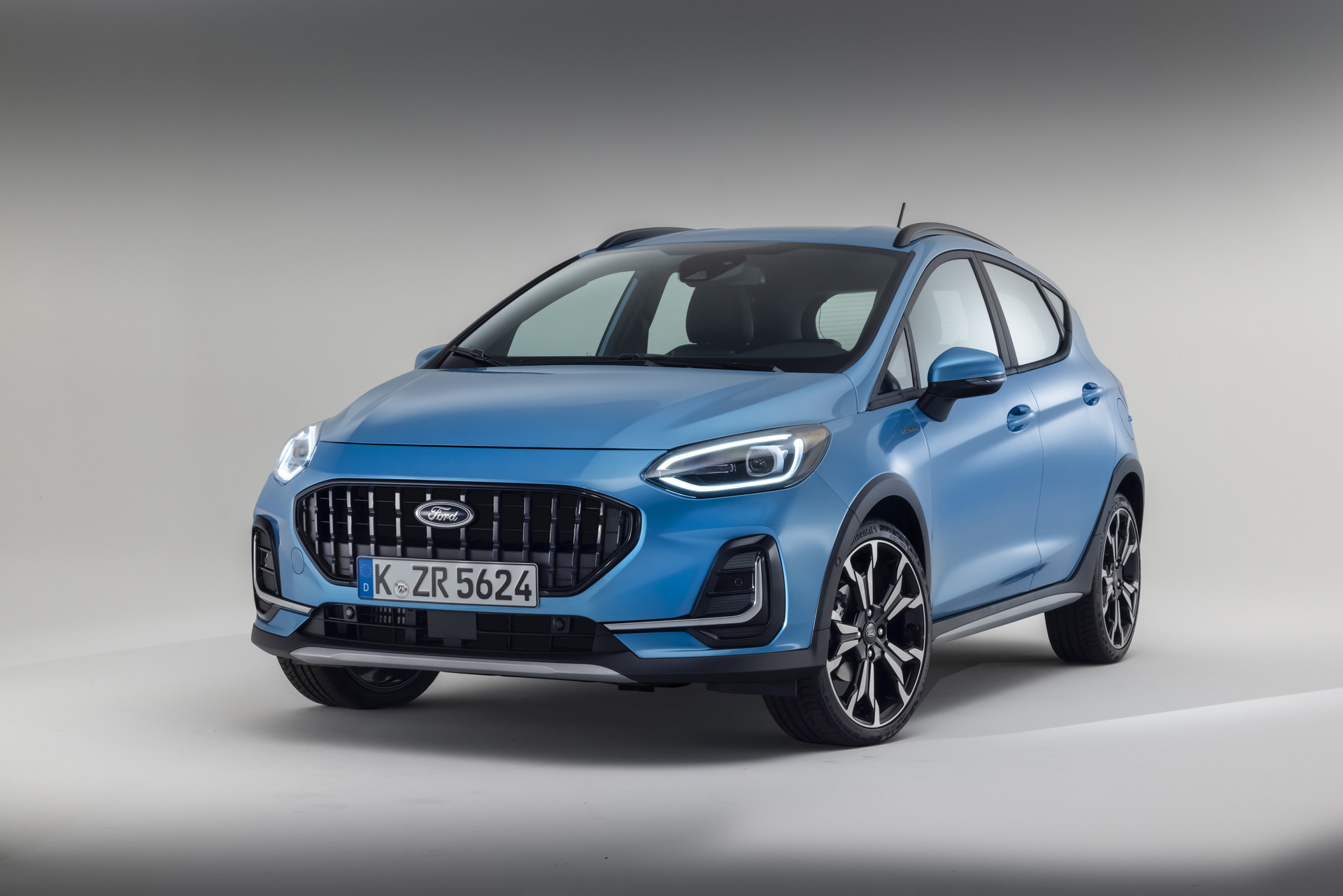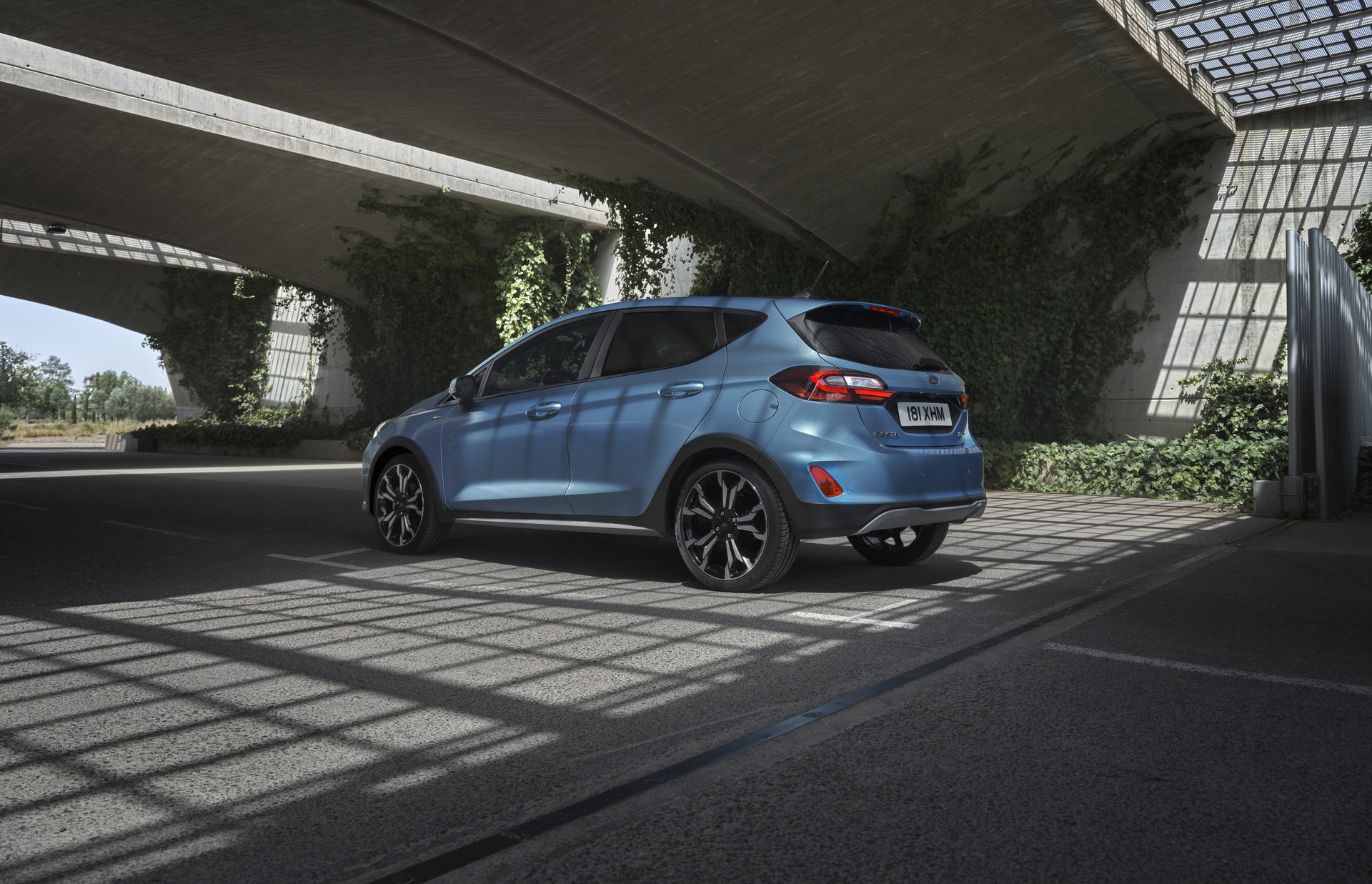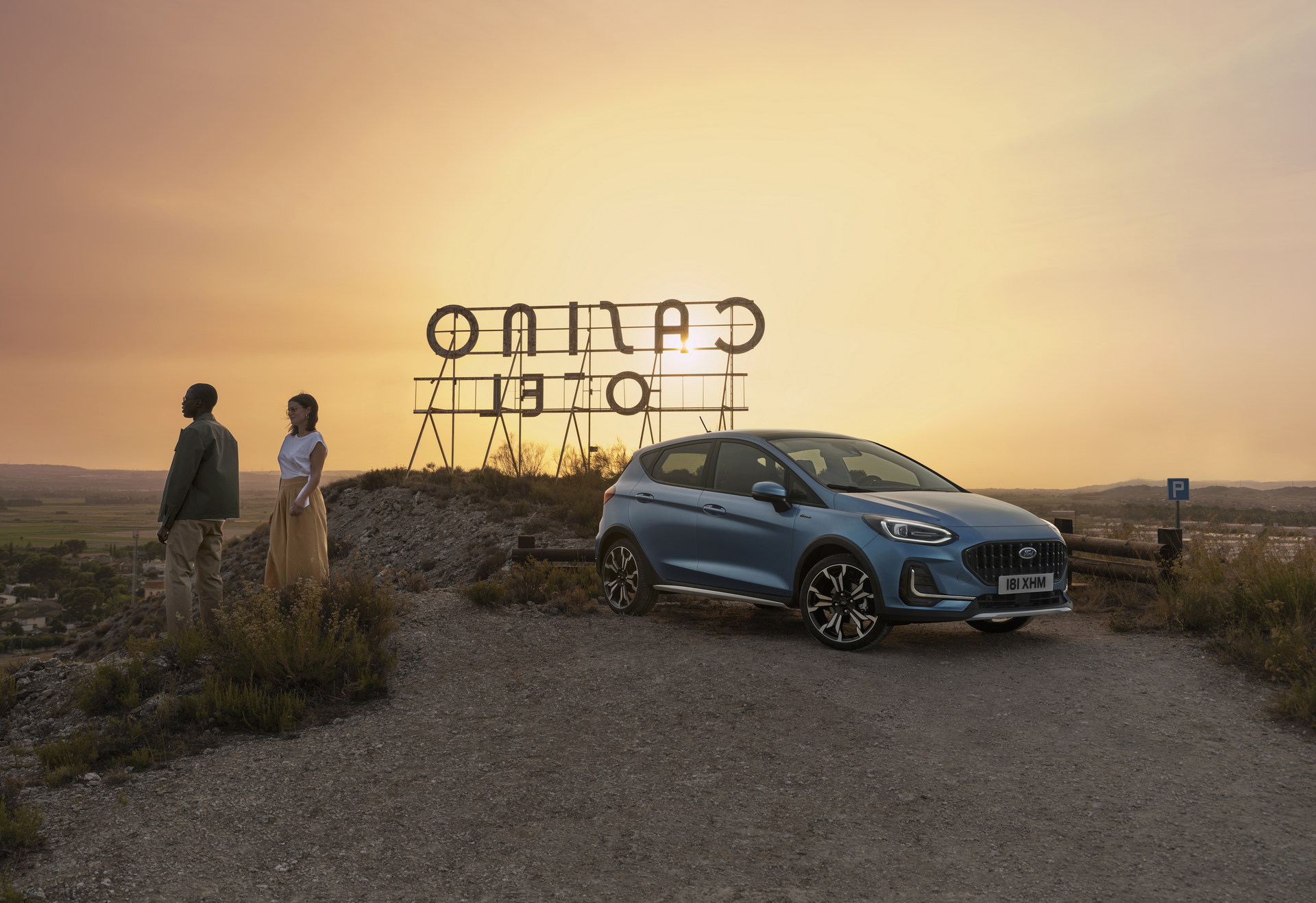Ford has just unveiled the facelifted Fiesta range with all variants getting visual tweaks, standard LED headlights, and more technology inside, while keeping the three-door bodystyle alive alongside the five-door hatchback. Besides the regular Fiesta (Trend, Titanium), the sporty ST-Line, the adventurous Active, and the full-blow ST hot hatch were unveiled alongside the commercial version (van).
The seventh-generation Ford Fiesta was unveiled in 2017, and it received a series of upgrades in 2020 including the mild-hybrid EcoBoost engine, connectivity, and safety features. This time, Ford gave the Fiesta a nip tuck in order to keep it fresh against the competition (VW Polo, Toyota Yaris, Renault Clio, Peugeot 208, etc).
Subtle but noticeable changes
As with all the mid-life cycle updates, the facelifted Fiesta is instantly recognizable, although everyone will notice there is something different in its front end. The new bumper has a significantly larger grille which now integrates the Ford emblem and is surrounded by enlarged intakes. Each variant has a unique look with the ST-Line and ST getting similar sporty treatment and the Active retaining the crossover look with skid-plates and additional chrome elements.
Ford didn’t show us the “regular” Trend and Titanium grades which feature a gloss chrome surround for the grille and smaller side vents. The slightly reshaped LED headlights are now standard across the range, with the optional Matrix LED units featuring a Glare-Free High Beam.
The profile looks identical besides the seven new alloy wheel designs, including 17-inch and 18-inch rims, plus the two new exterior colors (Boundless Blue and Beautiful Berry). At the back, the only difference is the black surrounds on the taillights and the optional LEDs with a Premium Black outer finish.
As for the Vignale which was a separate, premium-focused grade on the outgoing model, it is now transformed into a package that can be combined with the Titanium, ST‑Line, and Active grades, in addition to the high-spec X variants.
Fully configurable 12.3-inch digital instrument cluster
Inside, there is a “fully-configurable” 12.3-inch digital instrument cluster that changes color and appearance according to the selected Drive Mode. Speaking of which, the regular Fiesta has Normal, Sport, and Eco modes, with additional Trail and Slippery modes for the Active, and a special Track mode for the ST.
The 8-inch central touchscreen can be specified with the updated SYNC 3 infotainment featuring navigation (with Live Traffic updates and Local Hazard Information), voice commands, Apple CarPlay / Android Auto compatibility plus the new Rear Occupant Alert.
Using the standard FordPass Connect modem the driver can remotely start, lock/unlock the car through their smartphone while having access to vehicle data. Ford also added a wireless charging pad for smartphones on the center console. Audiophiles will love the optional 10-speaker B&O Sound System with an integrated subwoofer and a 575-watt Digital Signal Processing Amplifier.
Safety equipment has been upgraded with the addition of the Wrong Way Alert which will help you spot No Entry signs on motorways with audible and visual warnings. Other ADAS systems include the Adaptive Cruise Control with Stop & Go, Blind Spot Information System with Cross-Traffic Alert, Lane-Keeping Aid, Active Park Assist, and Speed Sign Recognition.
Only petrol and mild-hybrid options
The engine range starts with the turbocharged 1.0-liter EcoBoost three-cylinder engine producing 99 hp (74 kW / 100 PS). Then there is the electrified 1.0-liter EcoBoost Hybrid with 48-volt mild-hybrid technology featuring a belt-driven integrated starter/generator (BISG). This is available in two power outputs, producing 123 hp (92 kW / 125 PS) and 153 hp (114 kW / 155 PS).
The former can be combined with either a six-speed manual gearbox or the seven-speed dual-clutch Powershift transmission, while the more powerful variant is only available with the manual. Ford doesn’t mention the naturally aspirated 1.0-liter petrol or the 1.5 EcoBlue turbodiesel so we assume both of them have been axed.
More torque for the Fiesta ST
The ST variant is fitted with an updated turbocharged 1.5-litre EcoBoost three-cylinder engine from the Puma ST. The three-cylinder engine produces the same 197 hp (147 kW / 200 PS), but a slightly increased 320 Nm (236 lb-ft) of torque over its predecessor’s 290 Nm (214 lb-ft). Power is transmitted to the front wheels through a six-speed manual gearbox with the help of an optional Quaife mechanical limited-slip differential.
See Also: 2021 Hyundai i20 N Is Here To Shake Up The Hot Hatch Market
0-62 mph (100 km/h) comes in 6.5 seconds, which is identical to the outgoing model. The Track mode (replacing the Eco mode of the lesser variants) disables traction control and sets the ESC to wide-slip mode for circuit driving. Finally, the ST-specific suspension developed by Ford Performance retains the force vectoring springs and the Tenneco twin-tube front bumpers. You don’t change a winning team, as they say.
Besides the sporty bodykit, the dual tailpipes on the diffuser, and the 17-inch wheels (optional 18-inch wheels with dark Magnetite finish), Ford is also introducing the new Mean Green color option for the Fiesta ST. Inside we find a set of revised Performance Seats with greater support, integrated headrests, premium Sensico trim featuring red stitching, and 14-way adjustment. The flat-bottomed steering wheel and the carbon-effect foil on the dashboard enhance the sporty atmosphere.
See Also: 2021 VW Polo GTI Takes After Its Big Brother With Tweaked Looks, Driver Assist Systems
Ford didn’t announce pricing for the facelifted Fiesta range, which should start higher than its predecessor due to the demise of the naturally aspirated engine. The first deliveries are expected in early 2022 in Europe.








